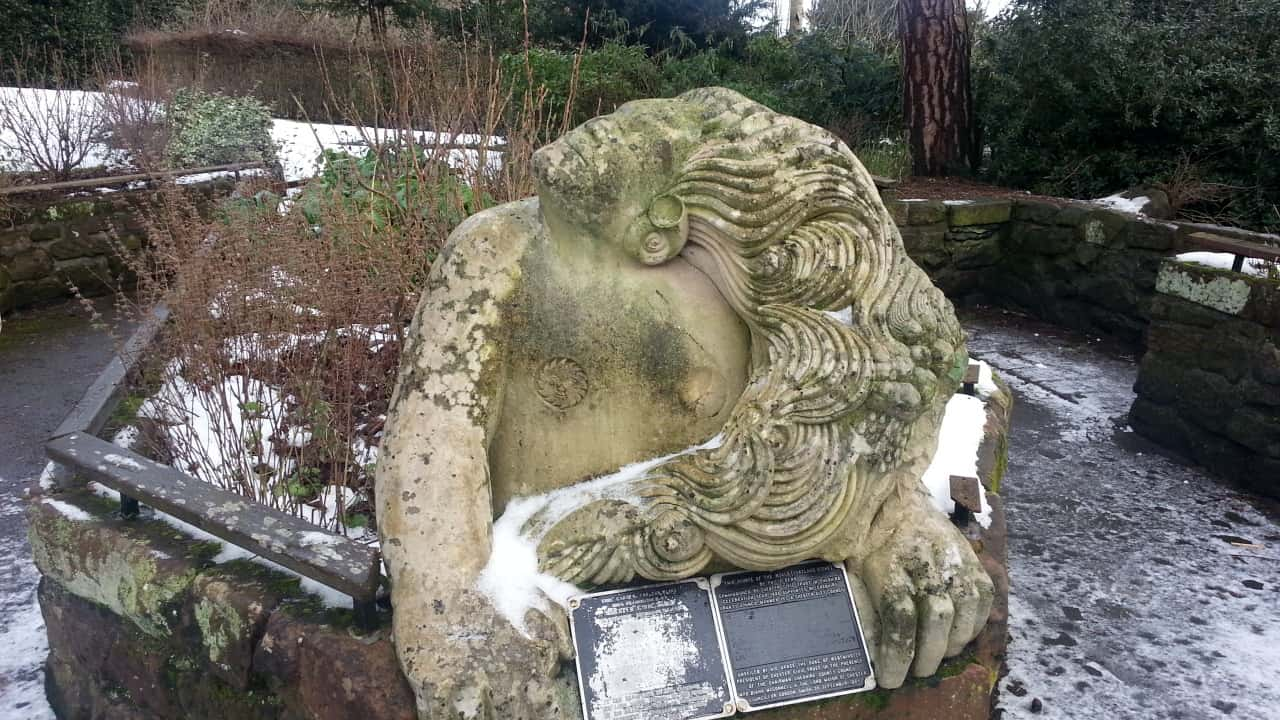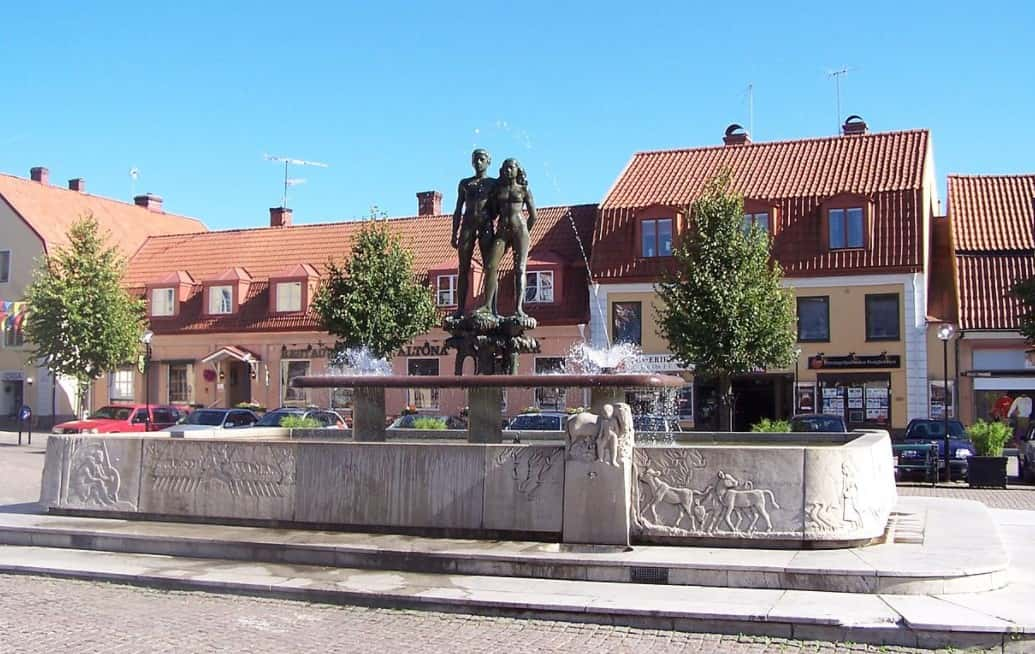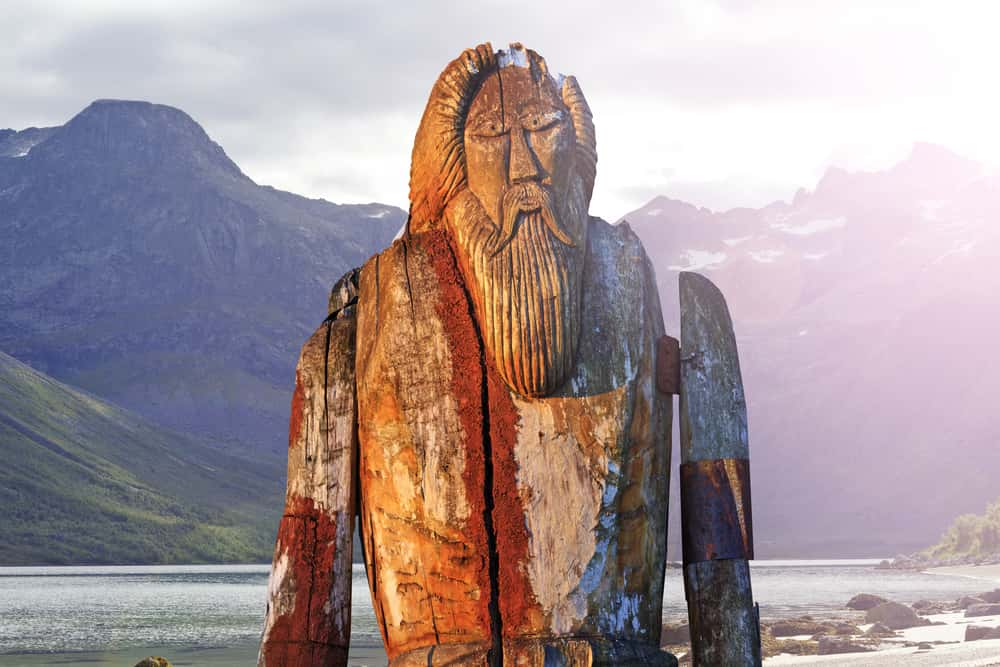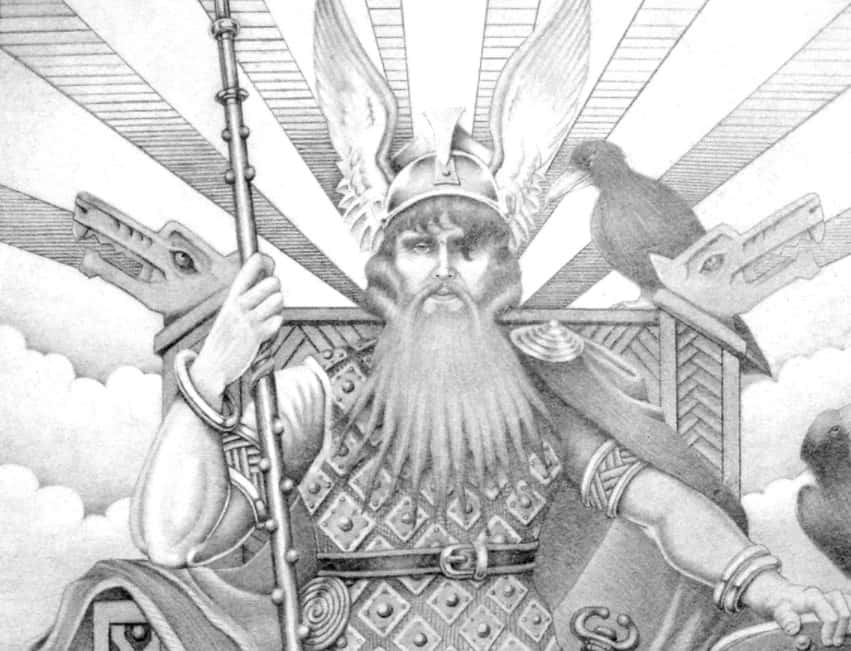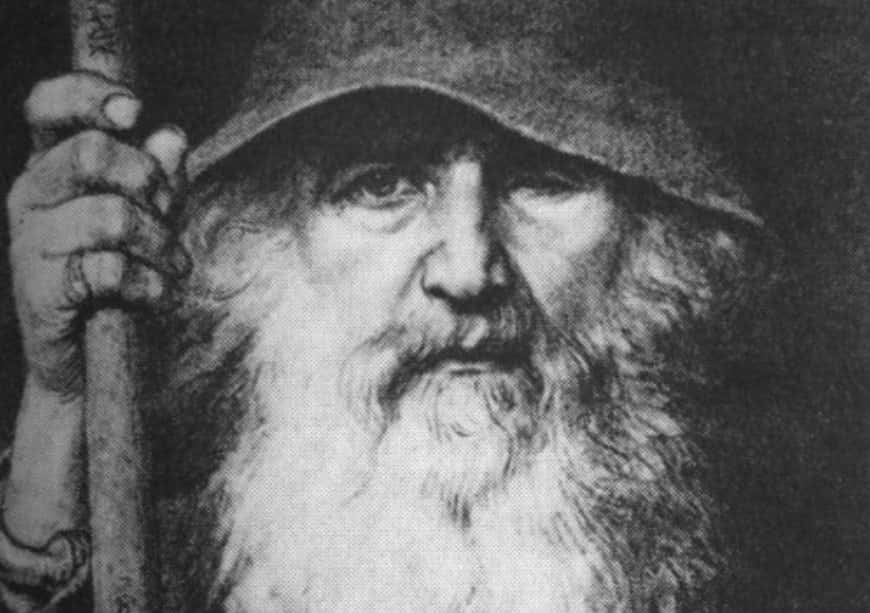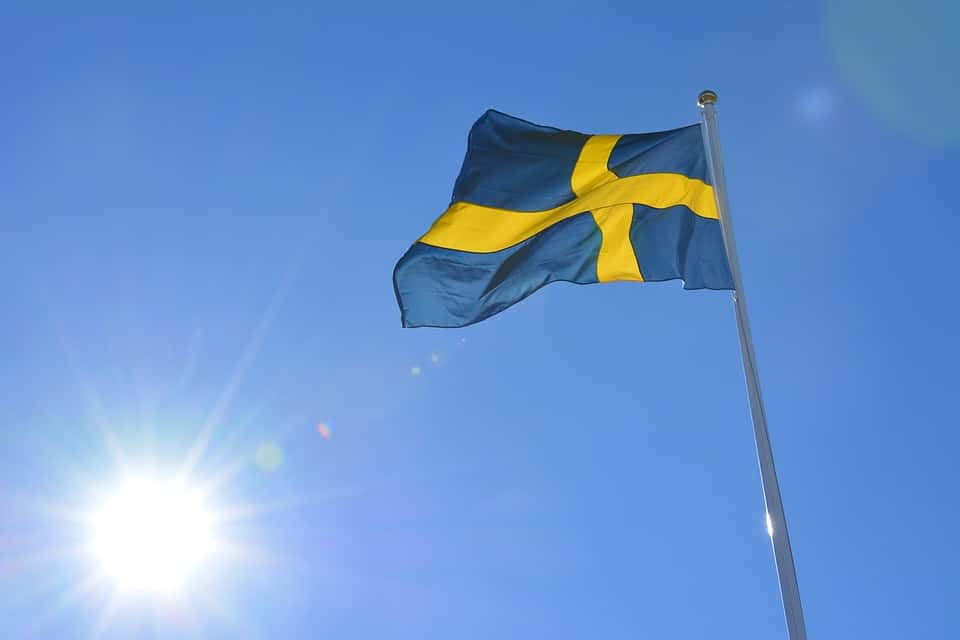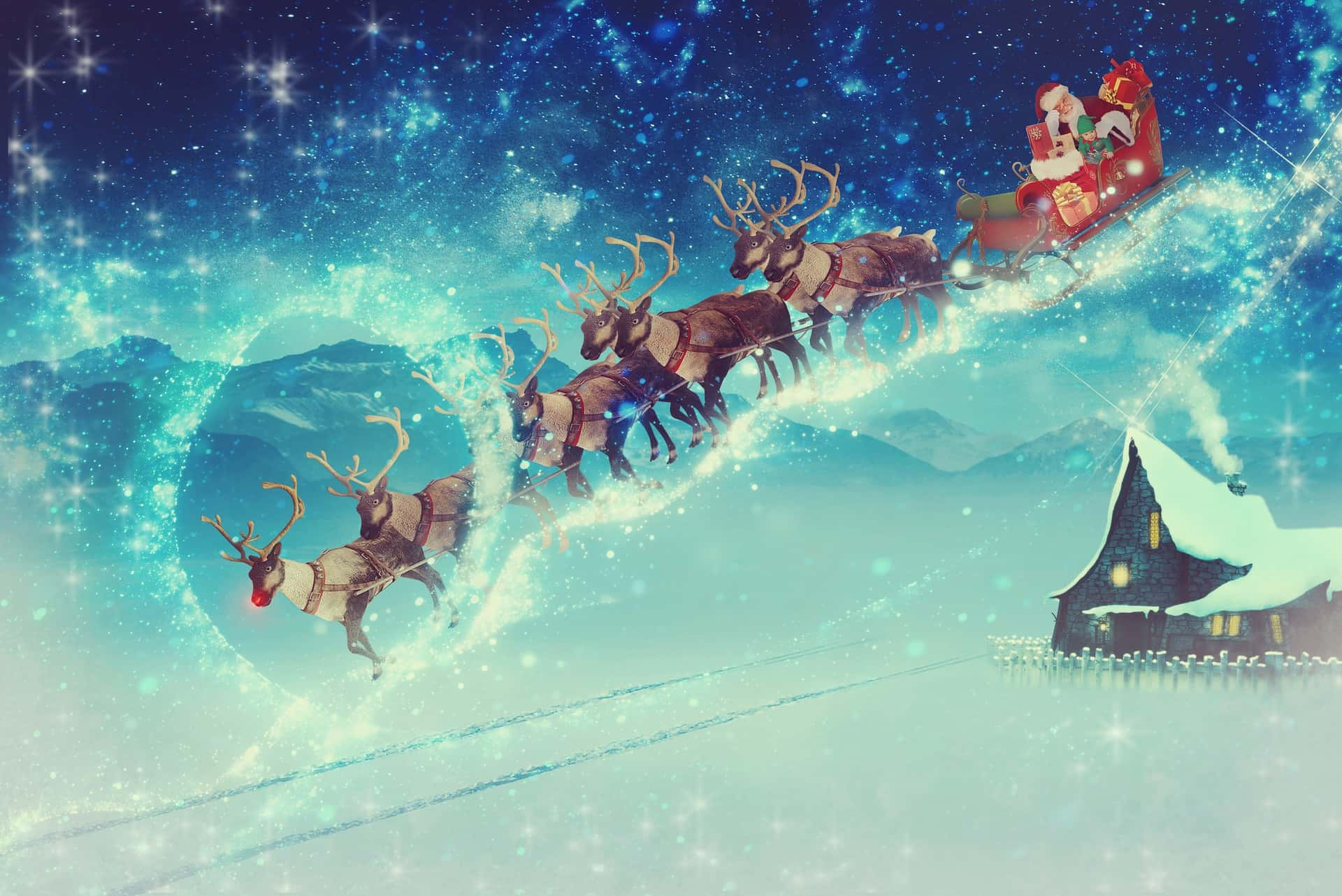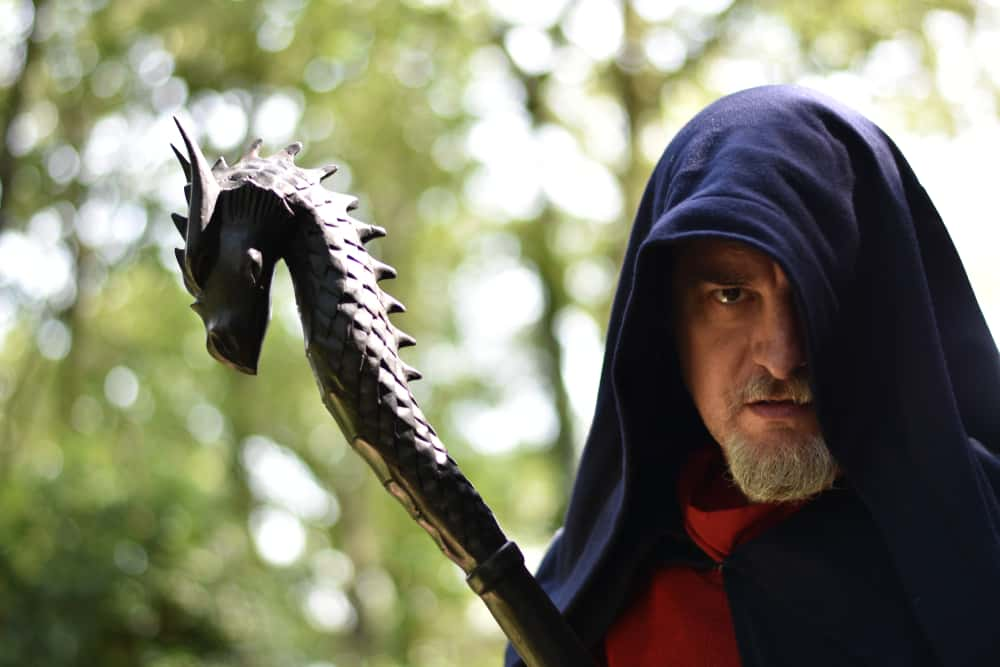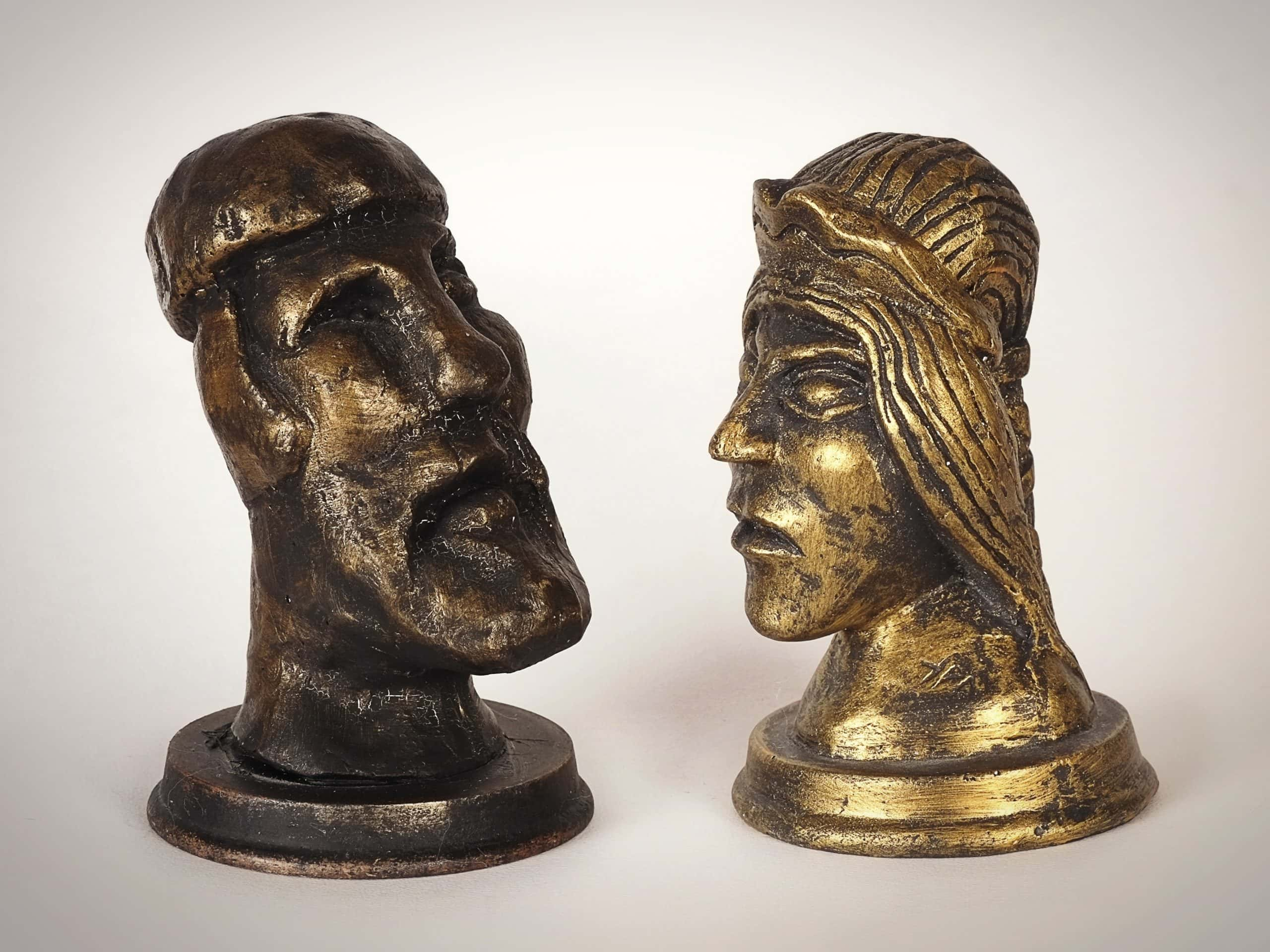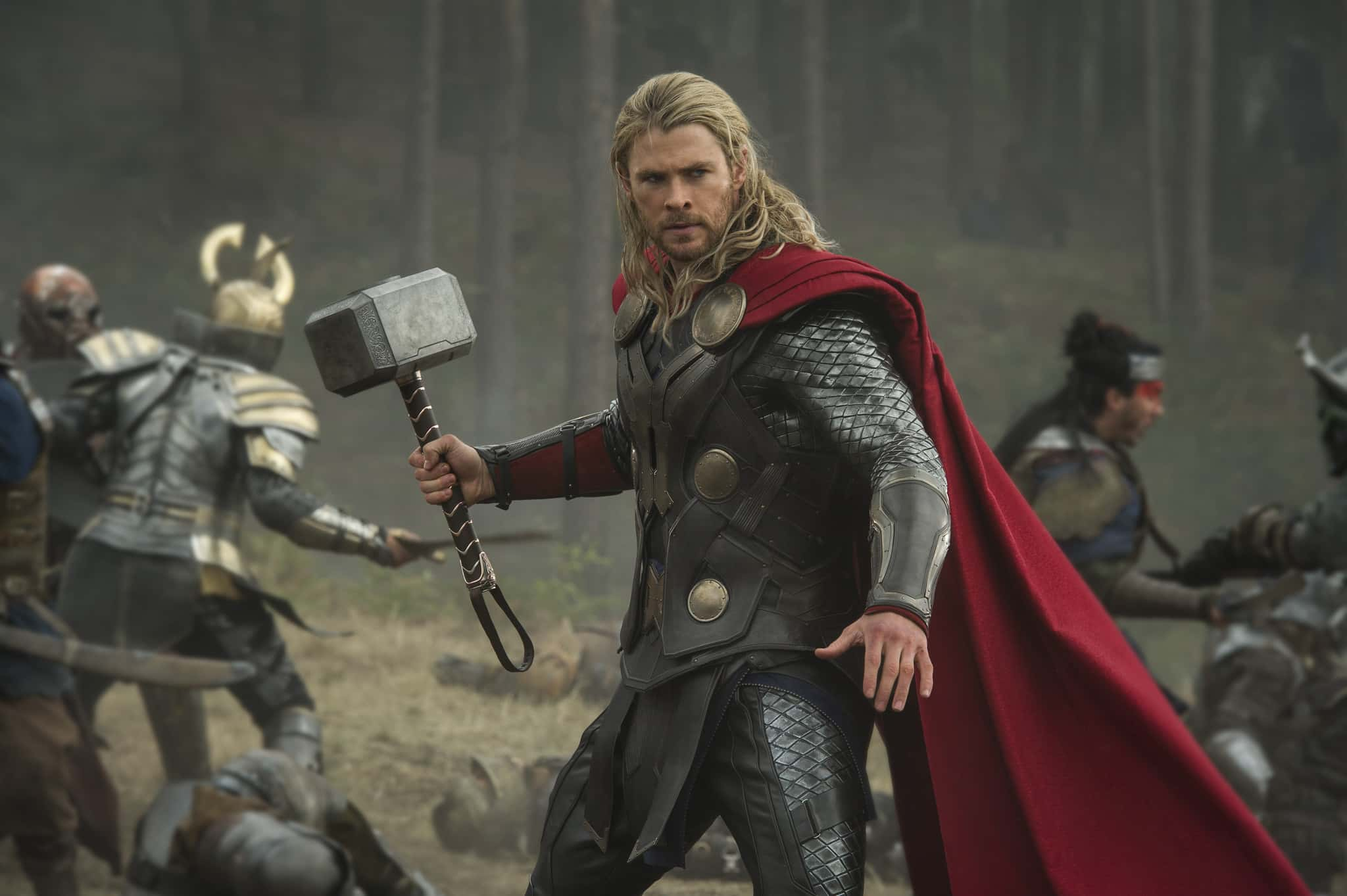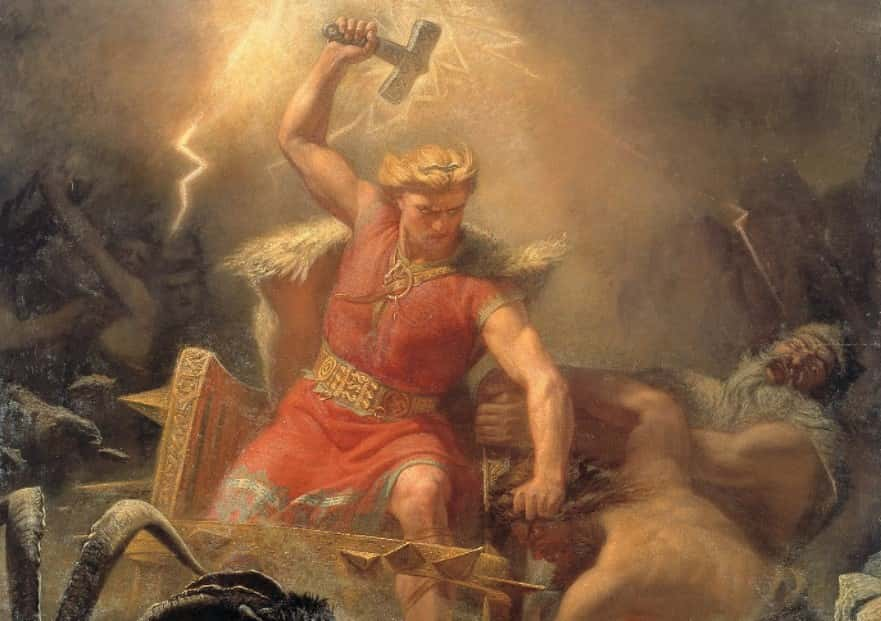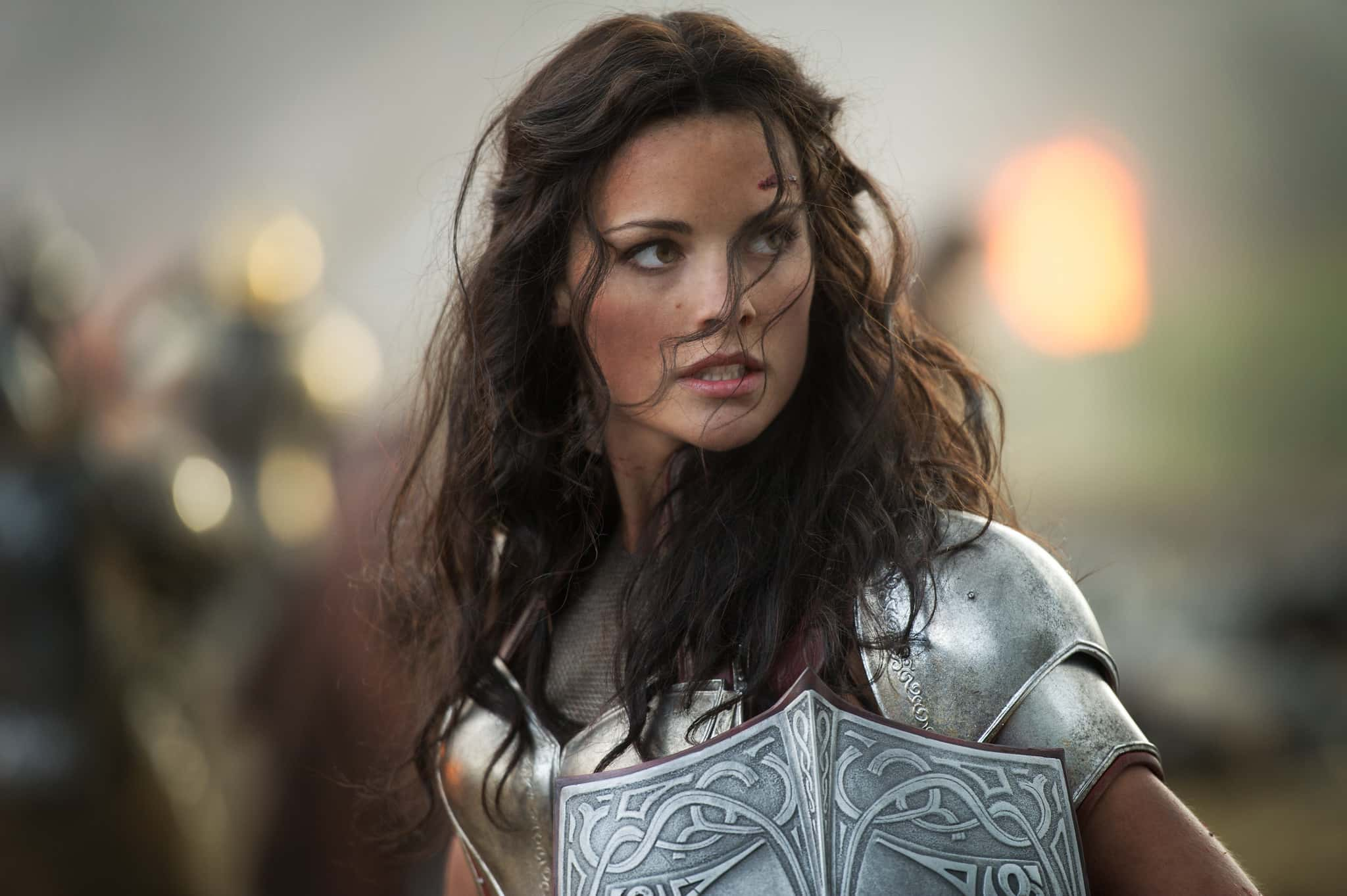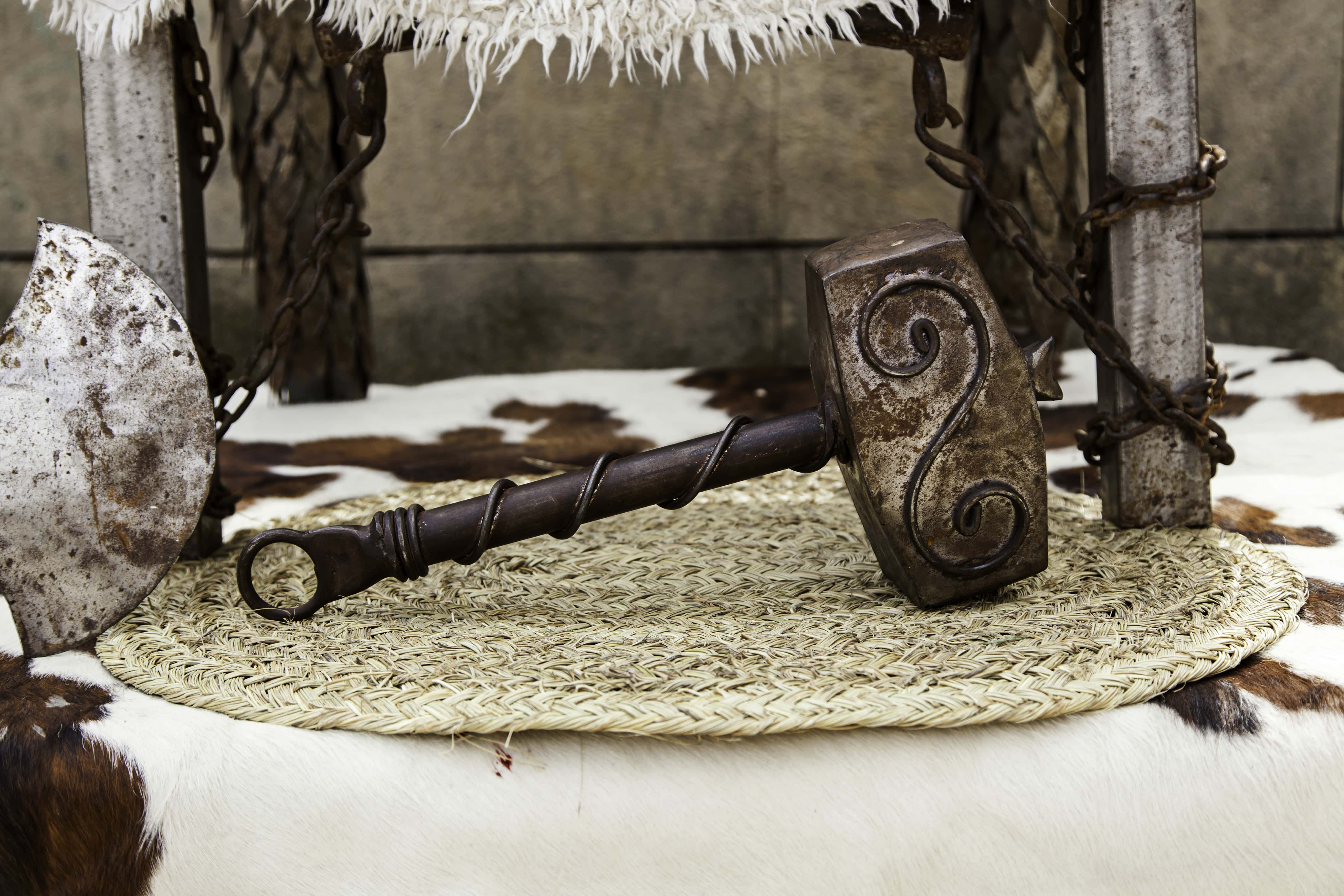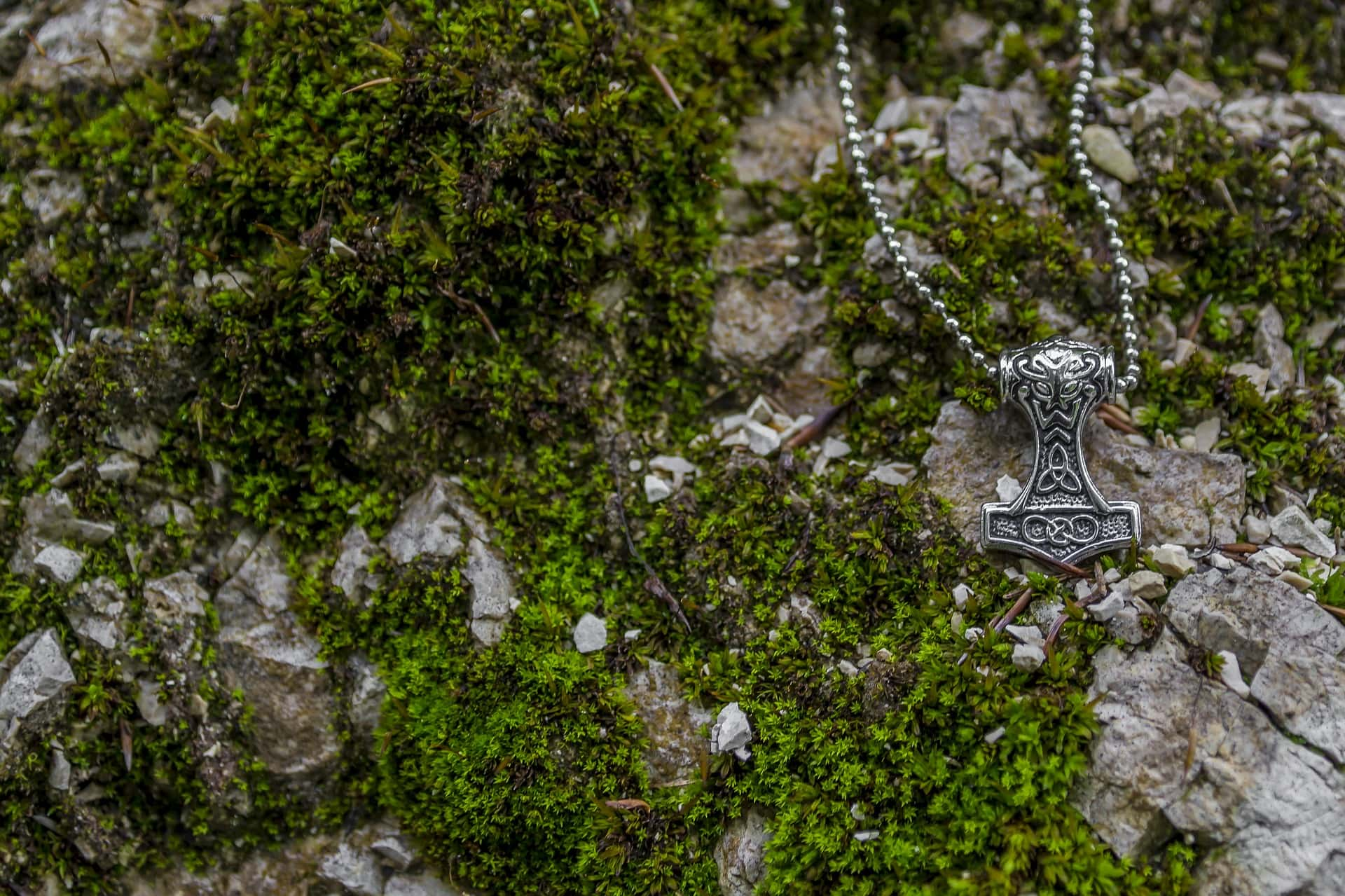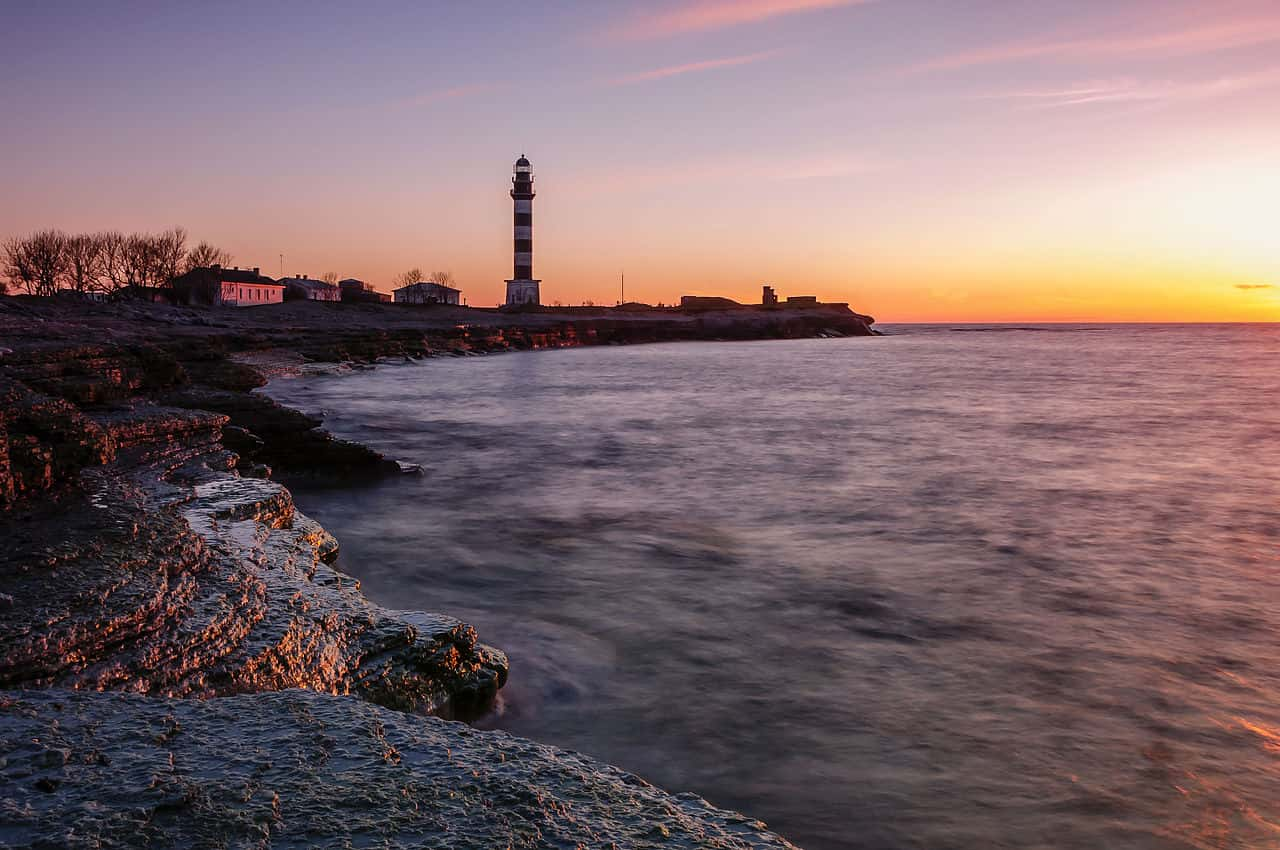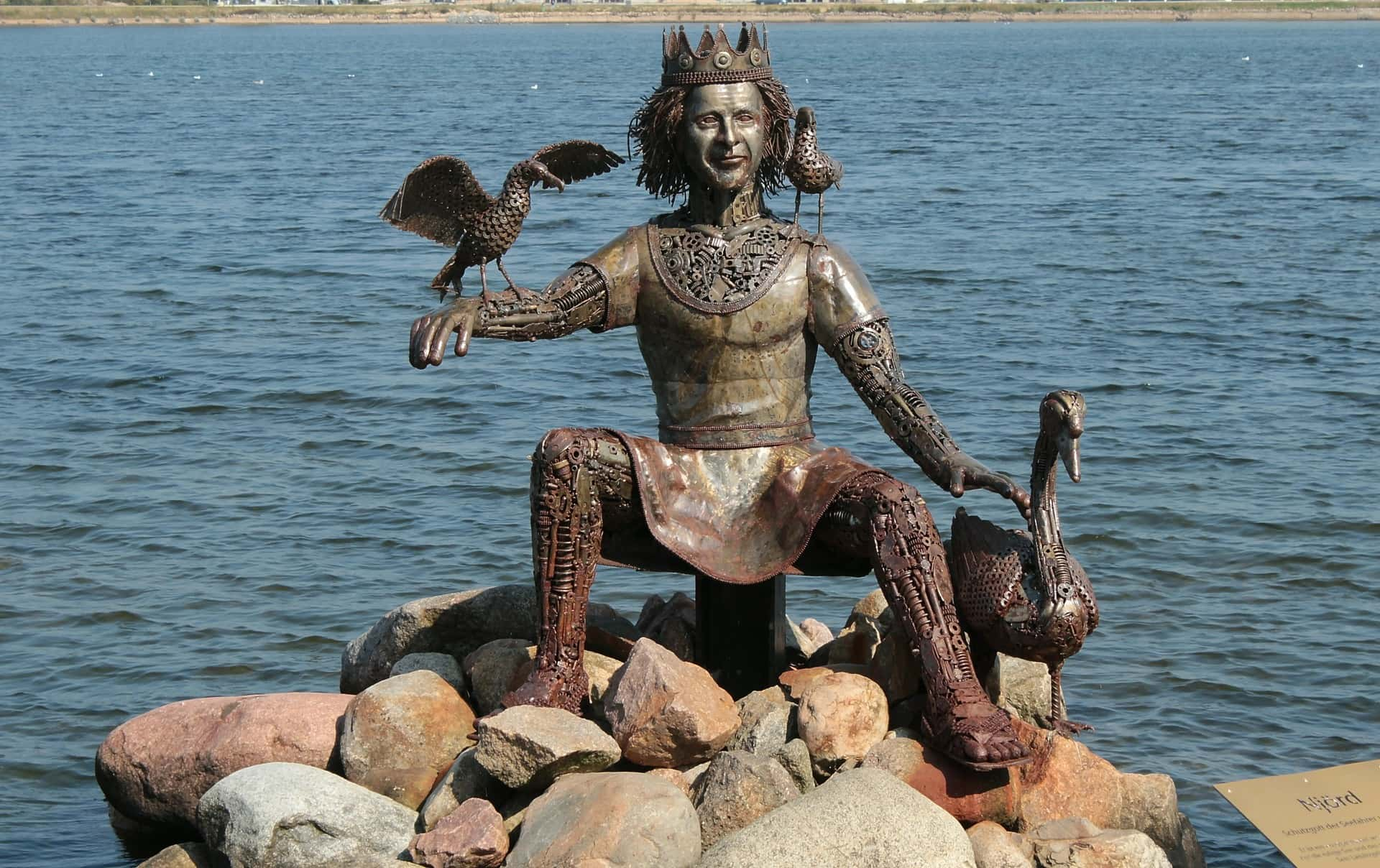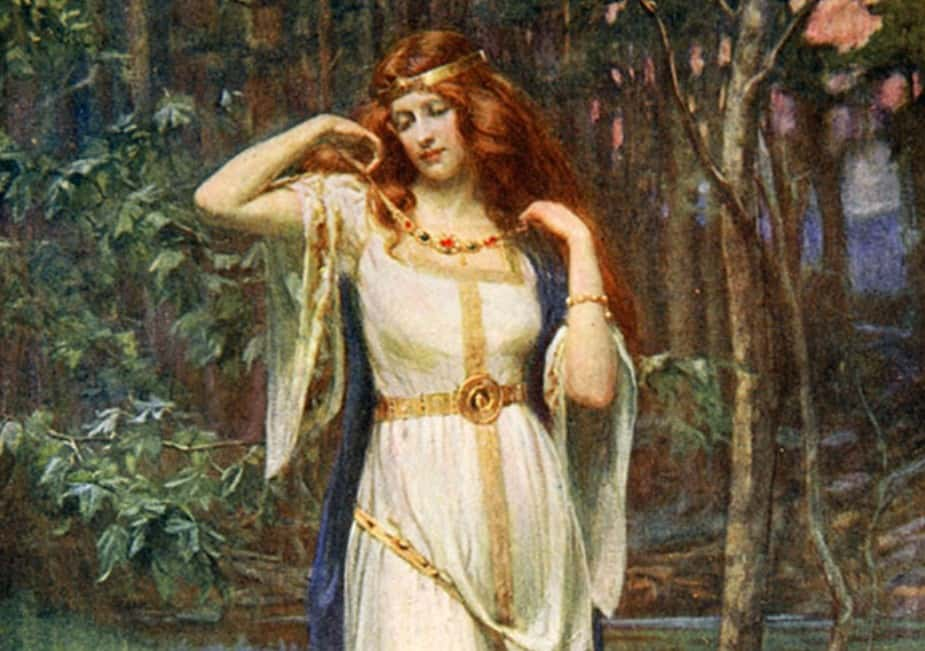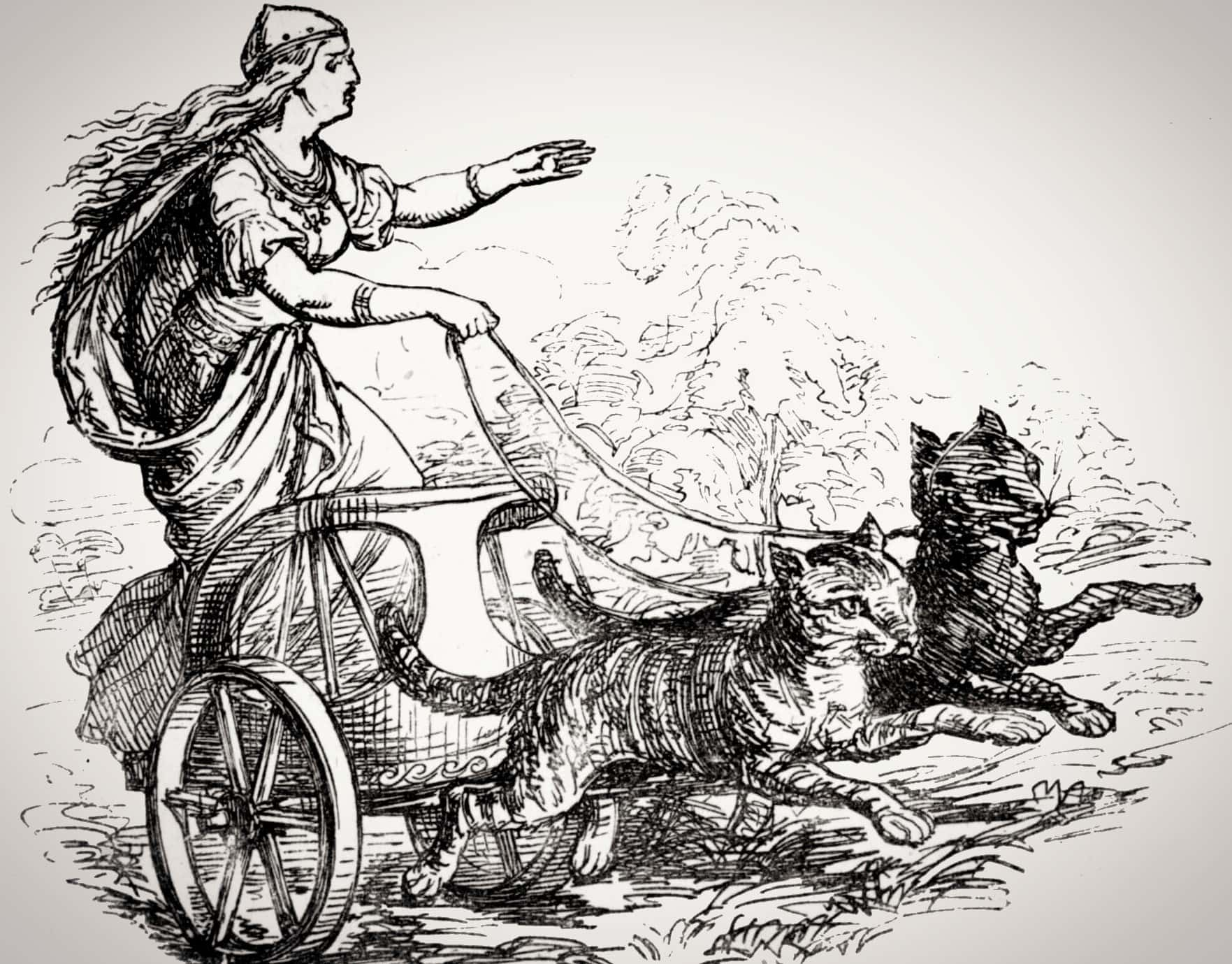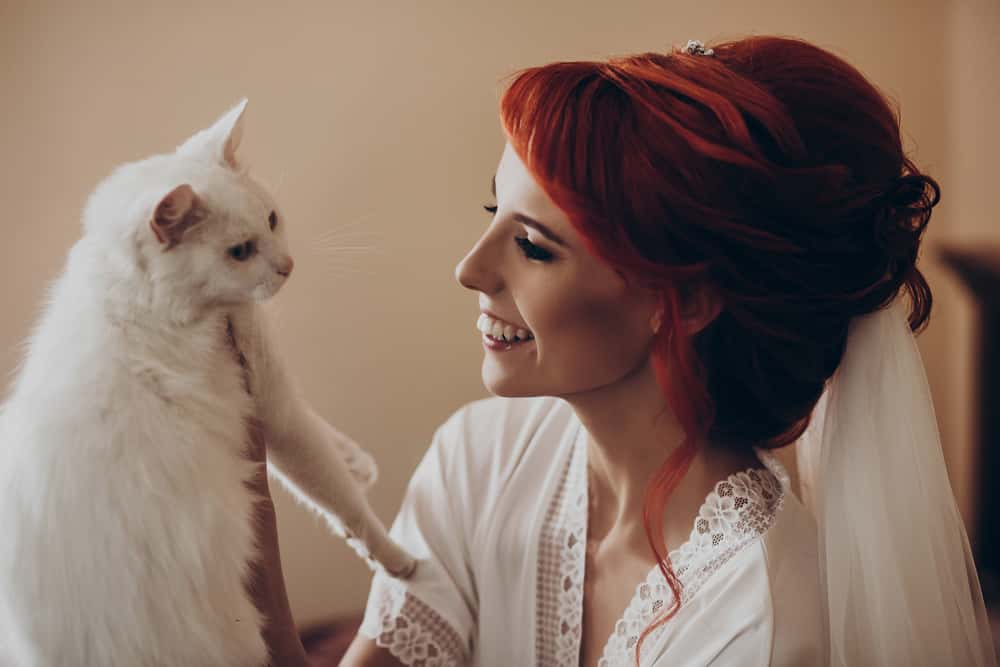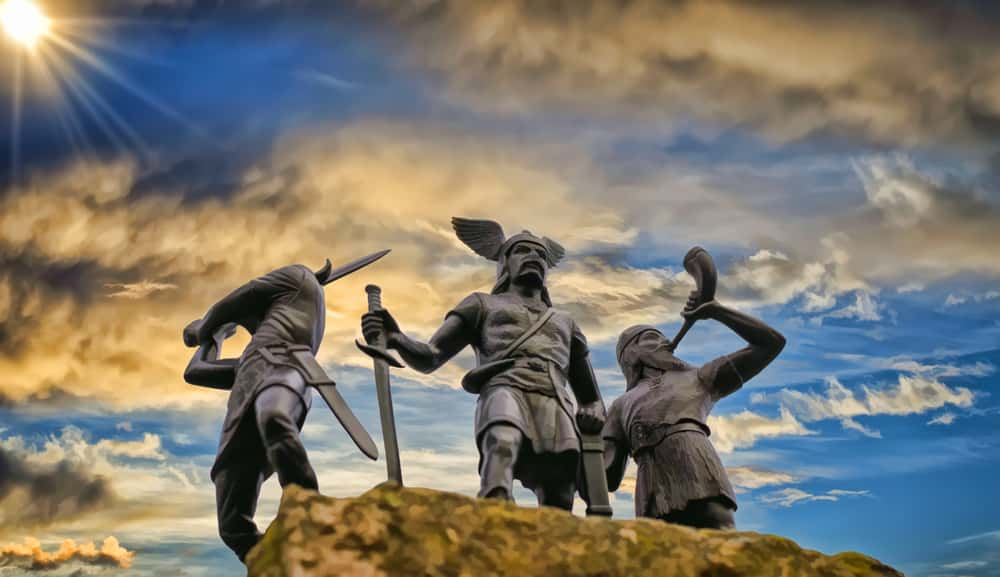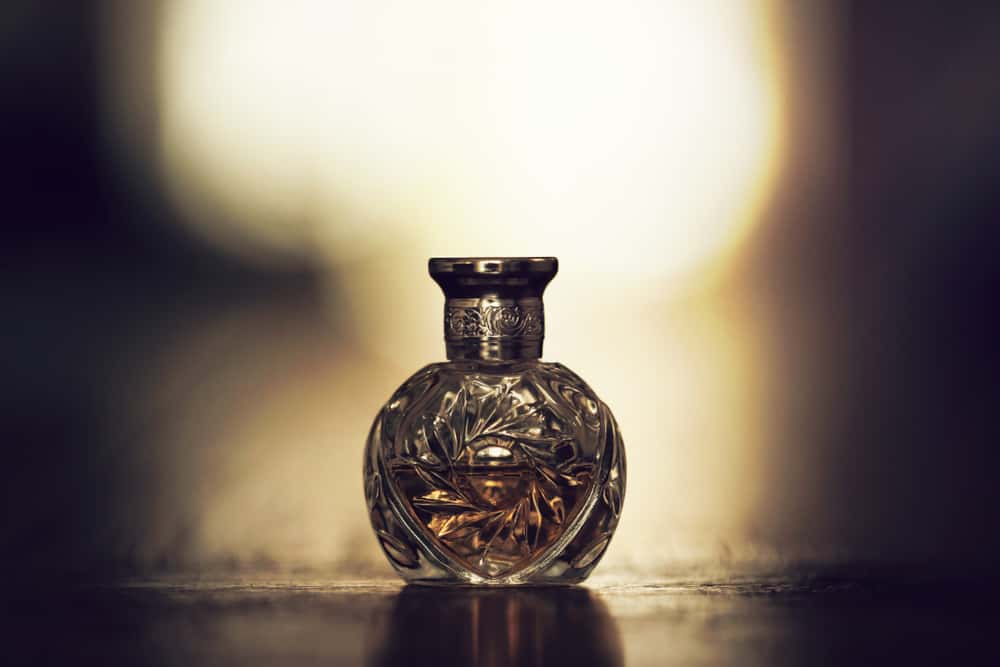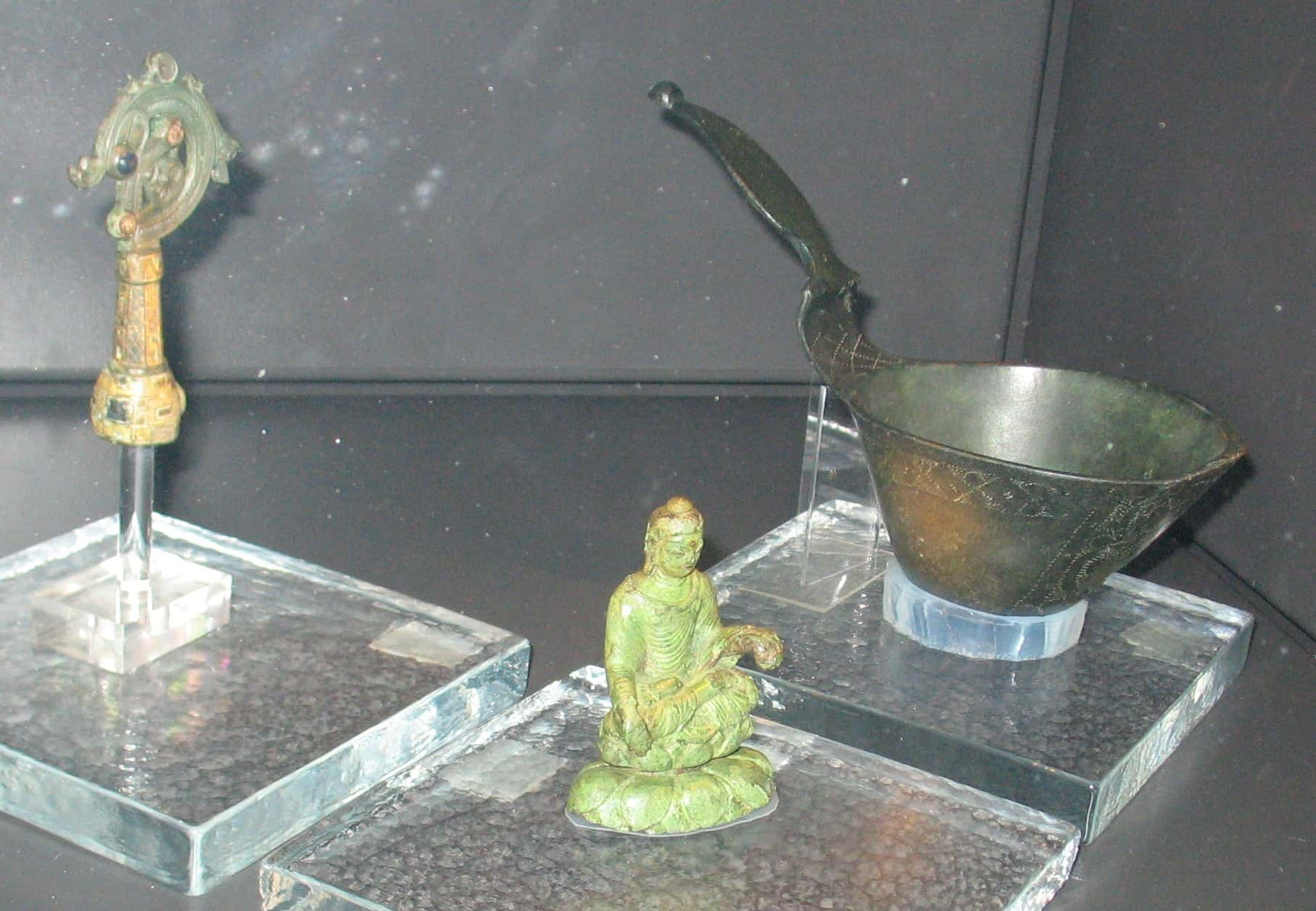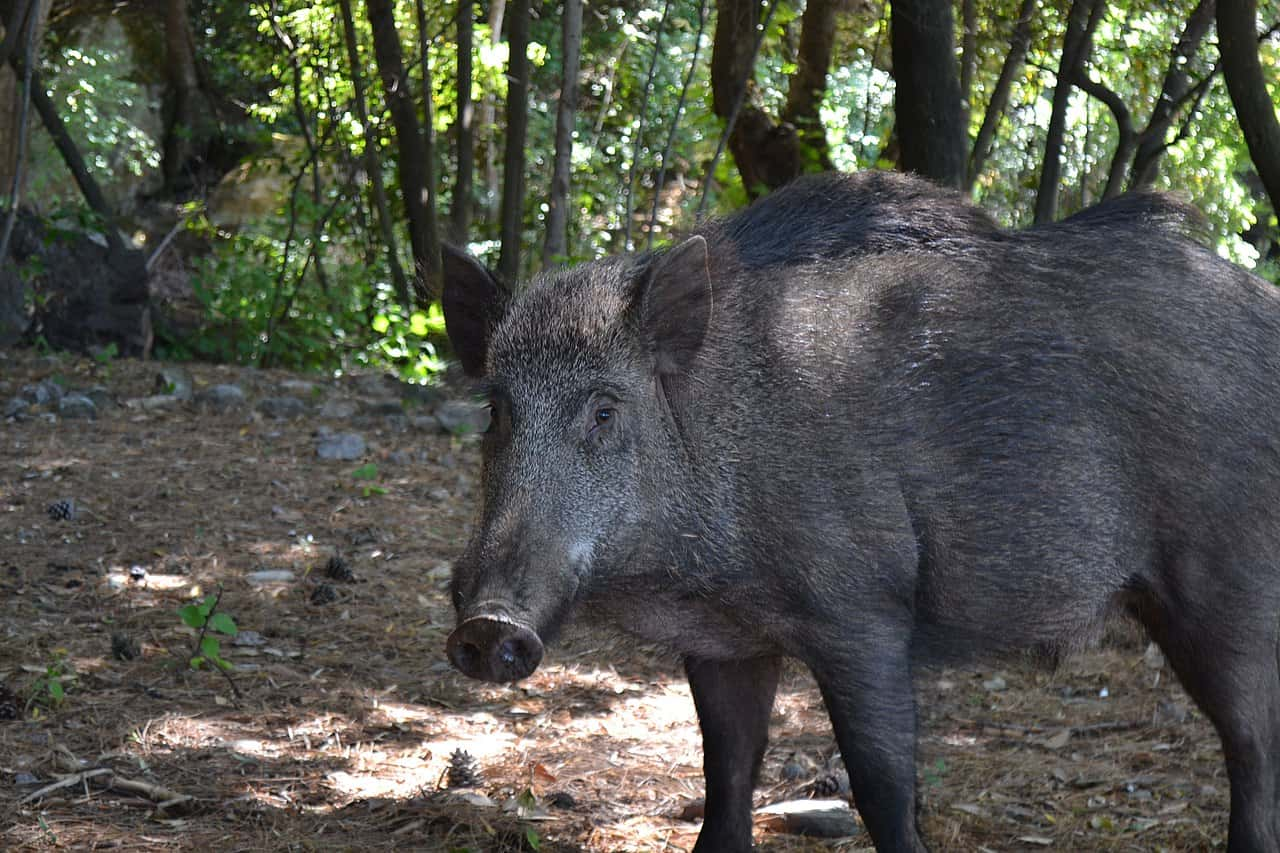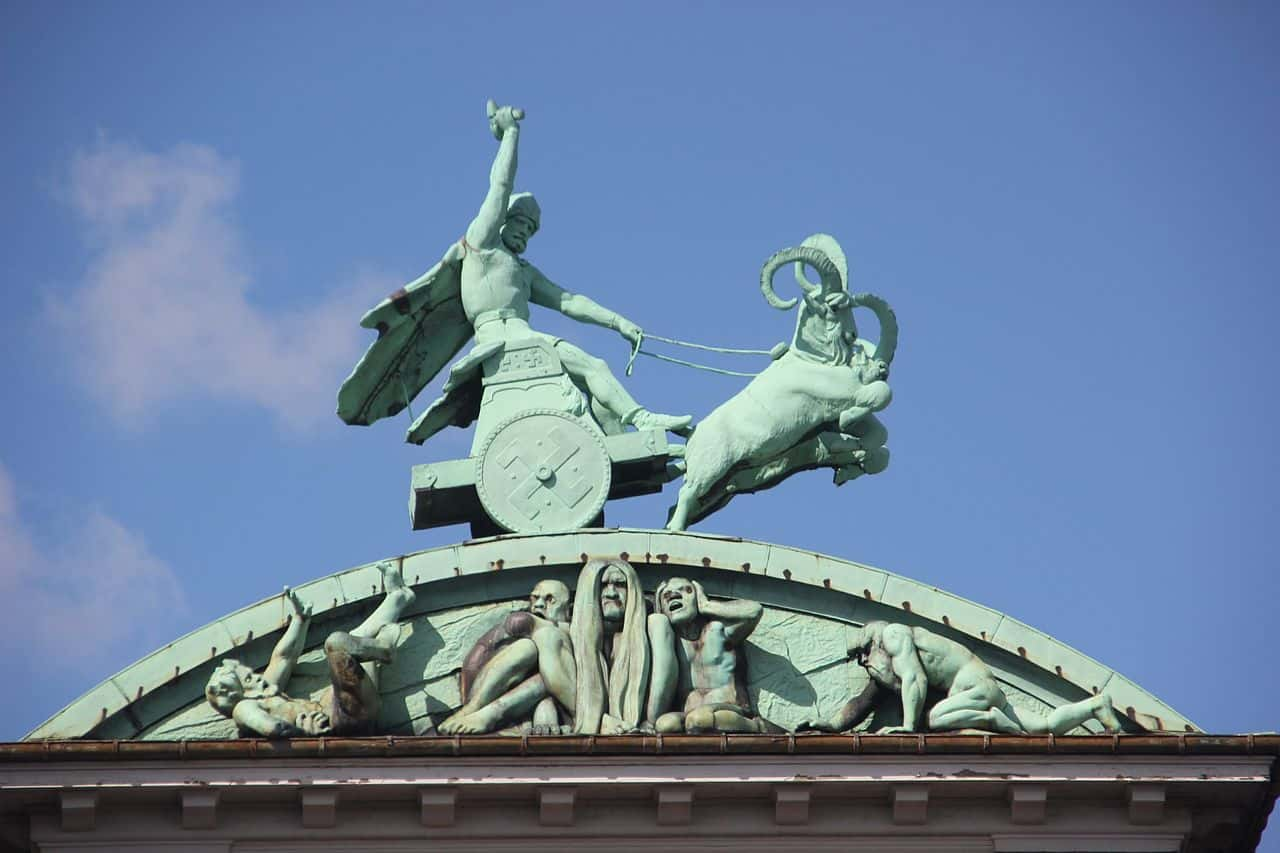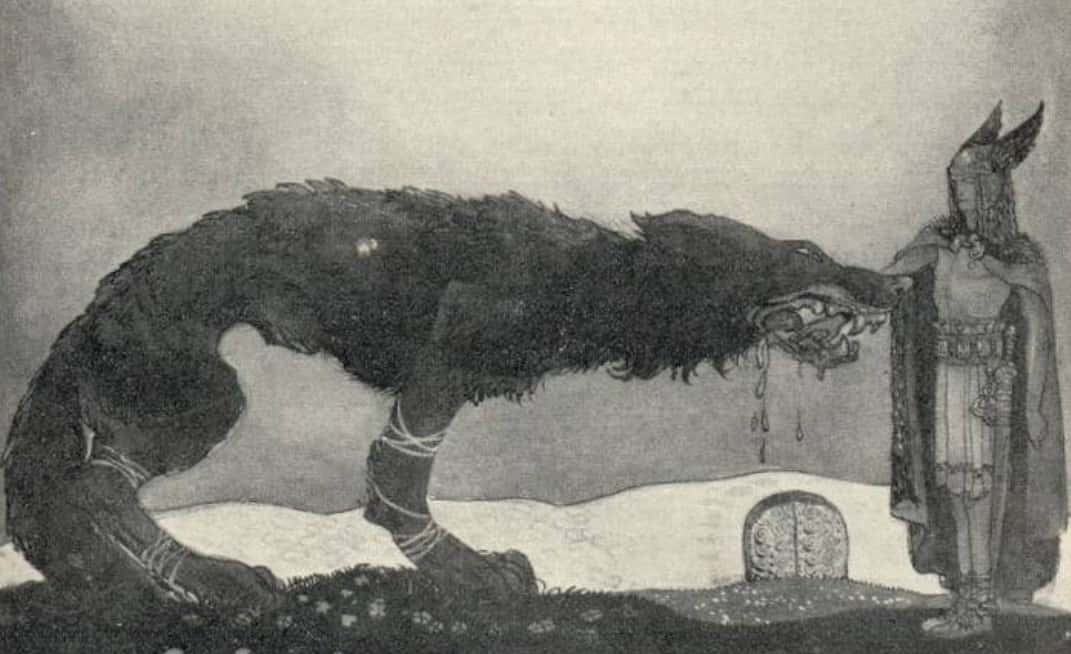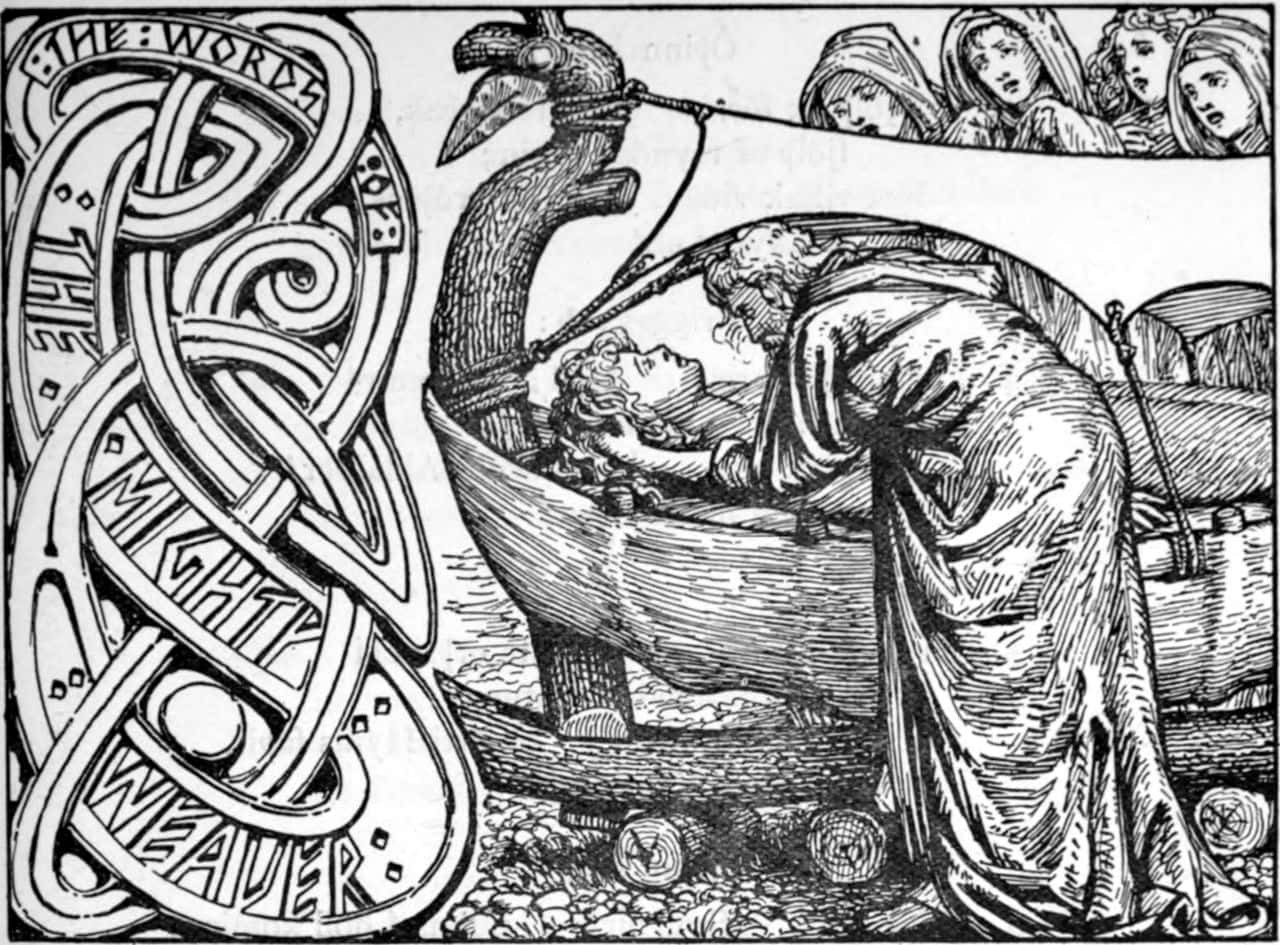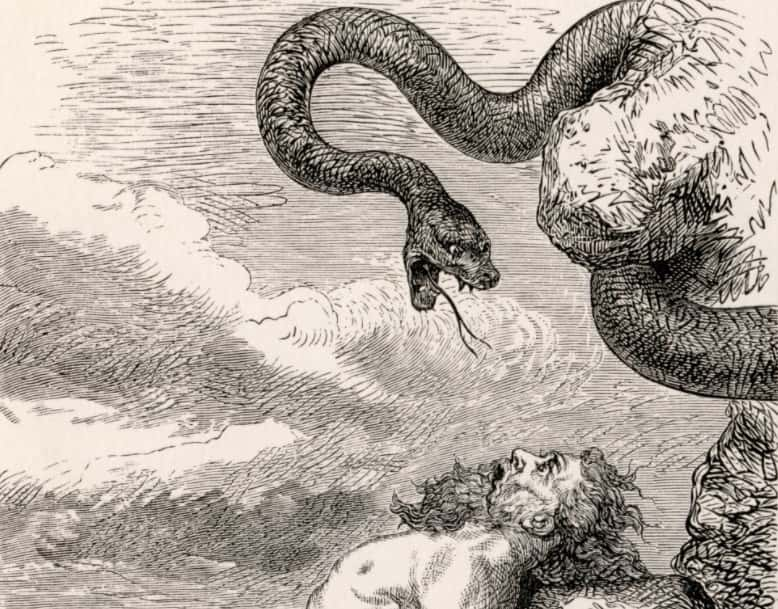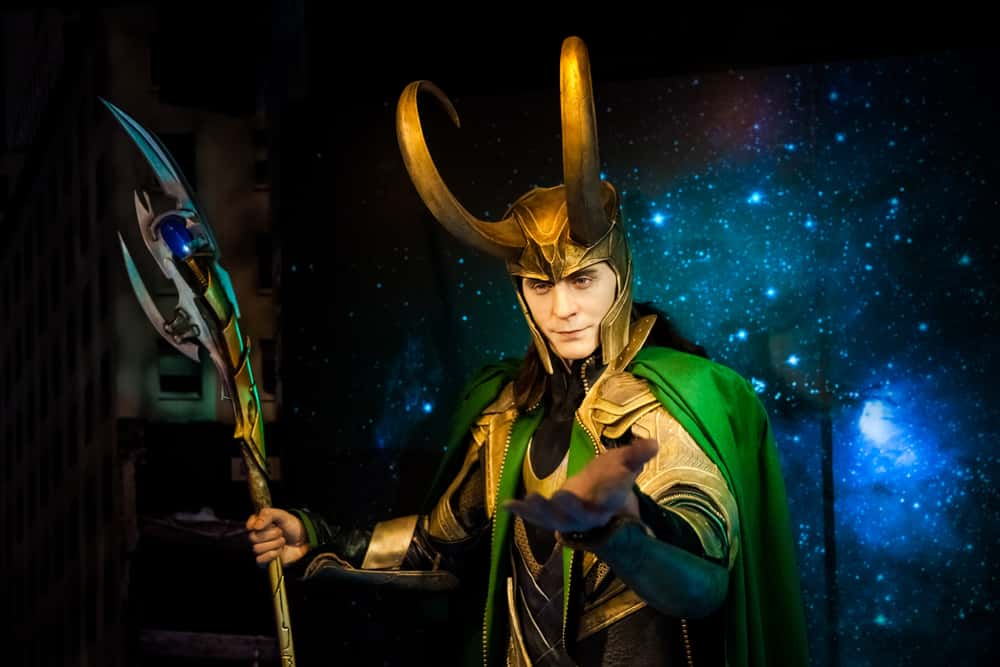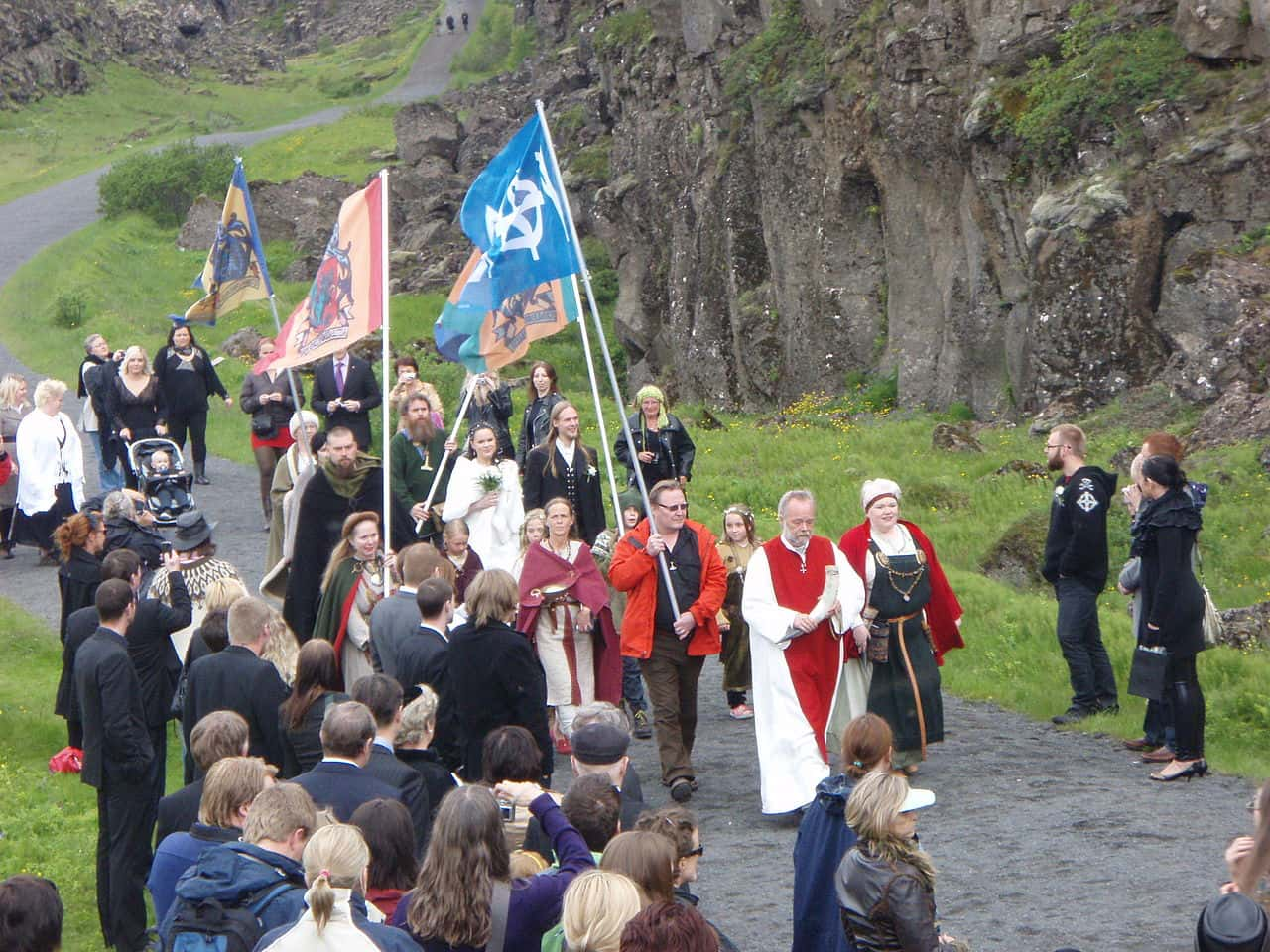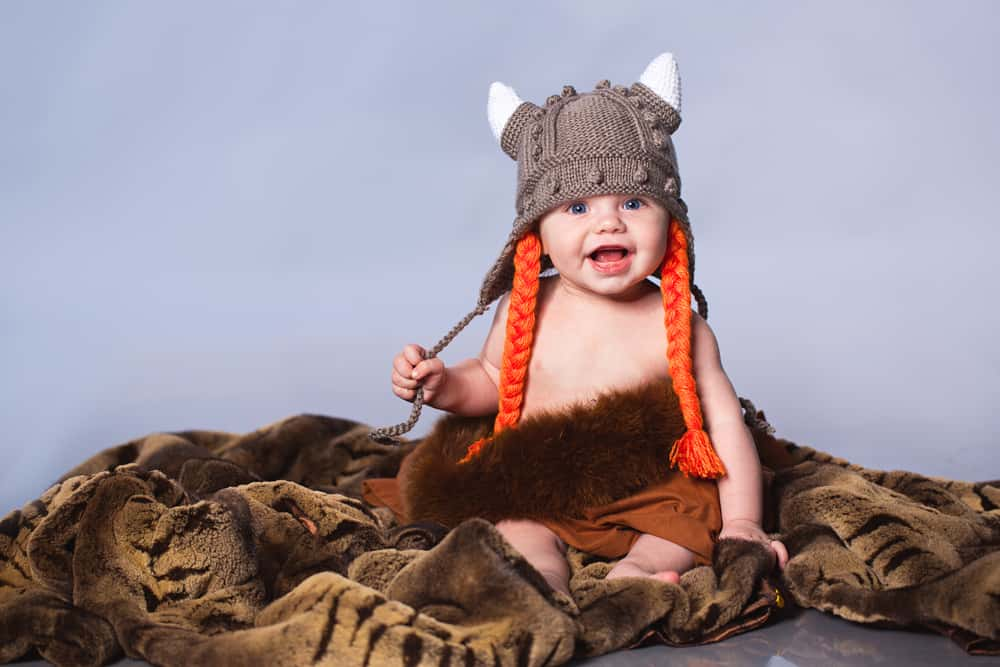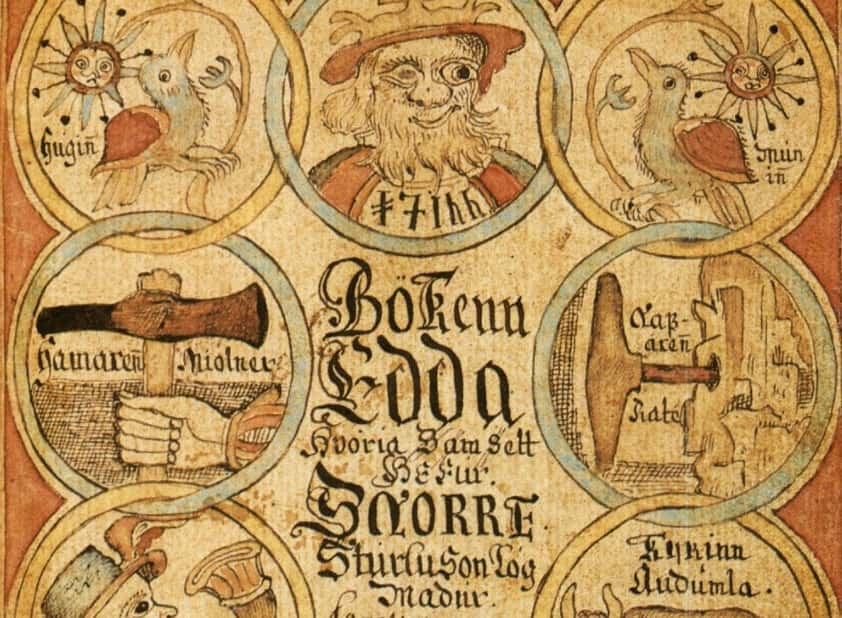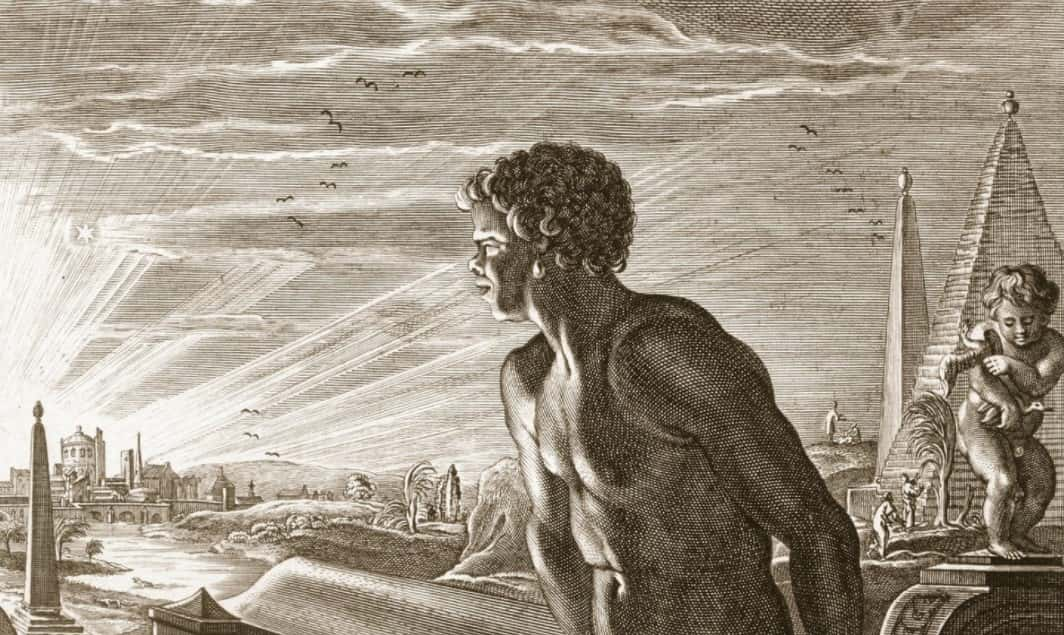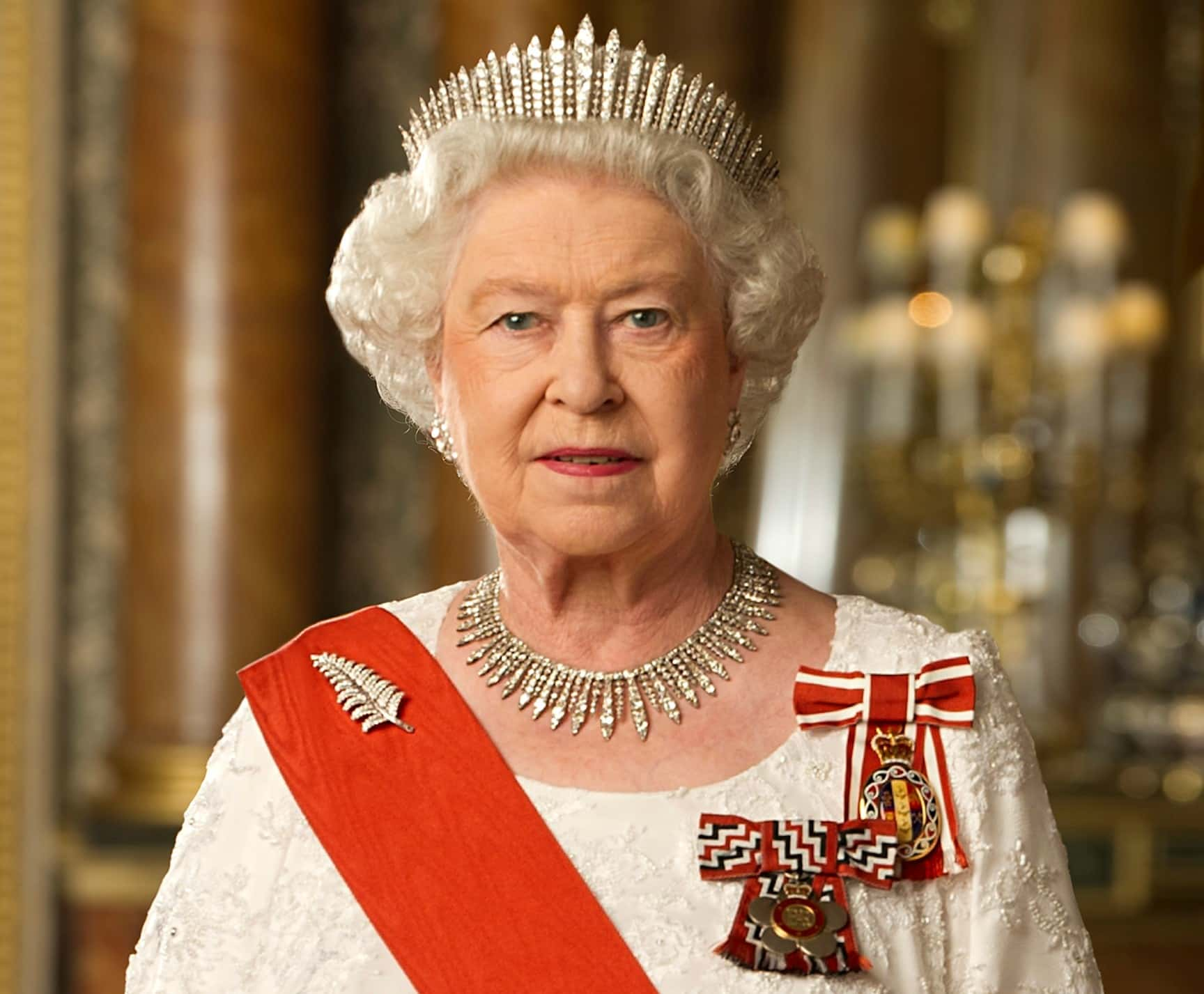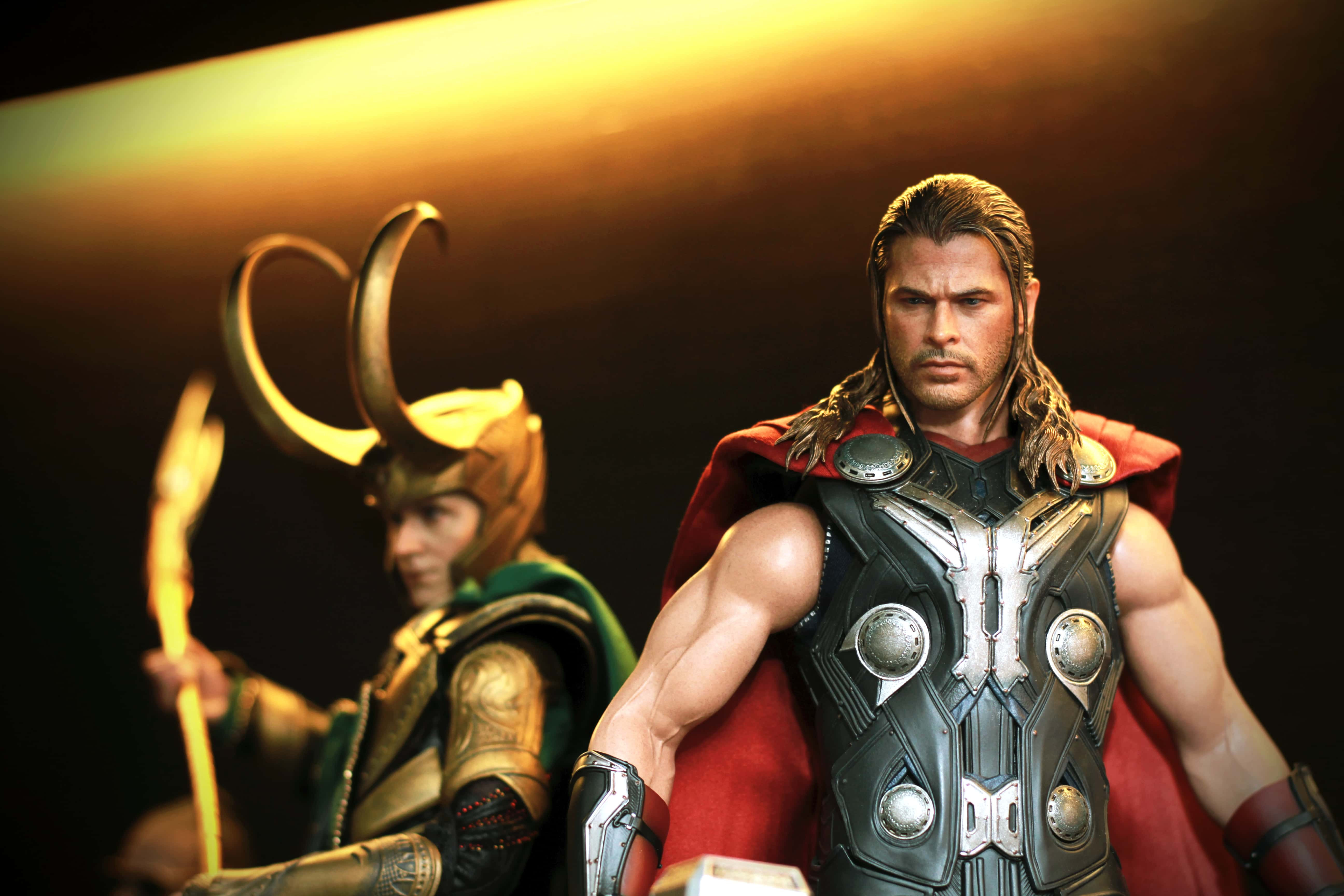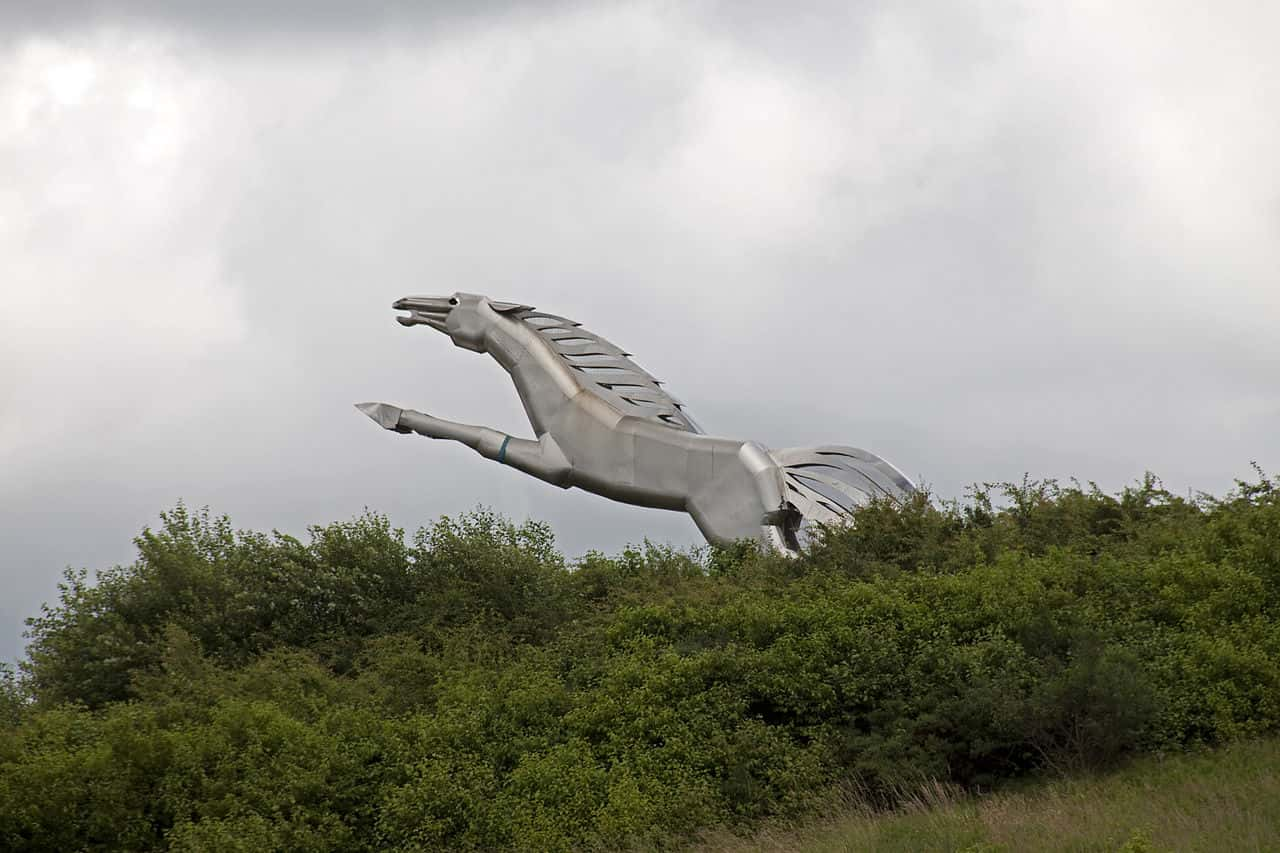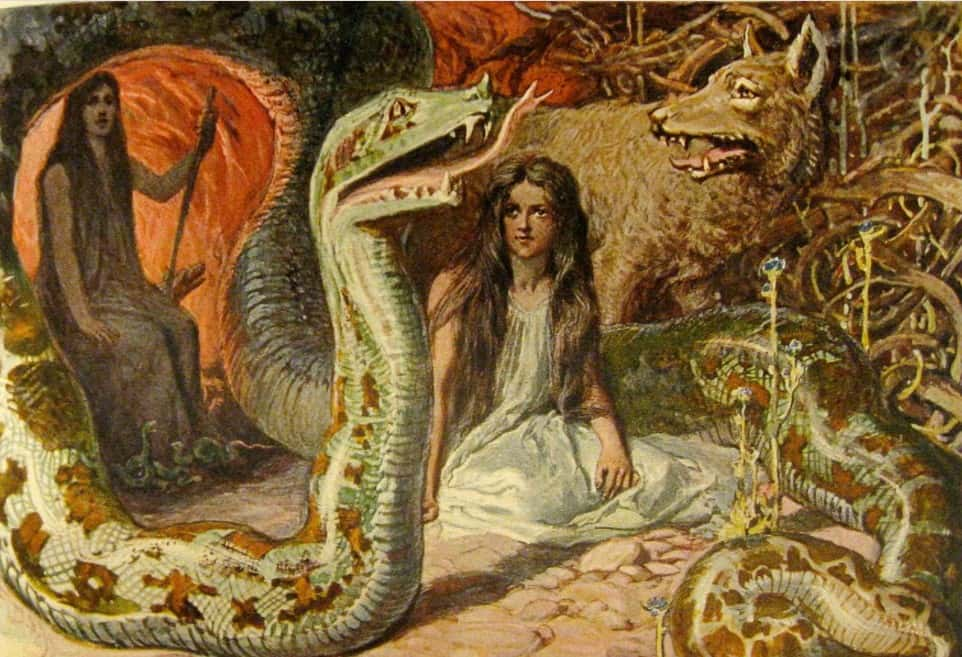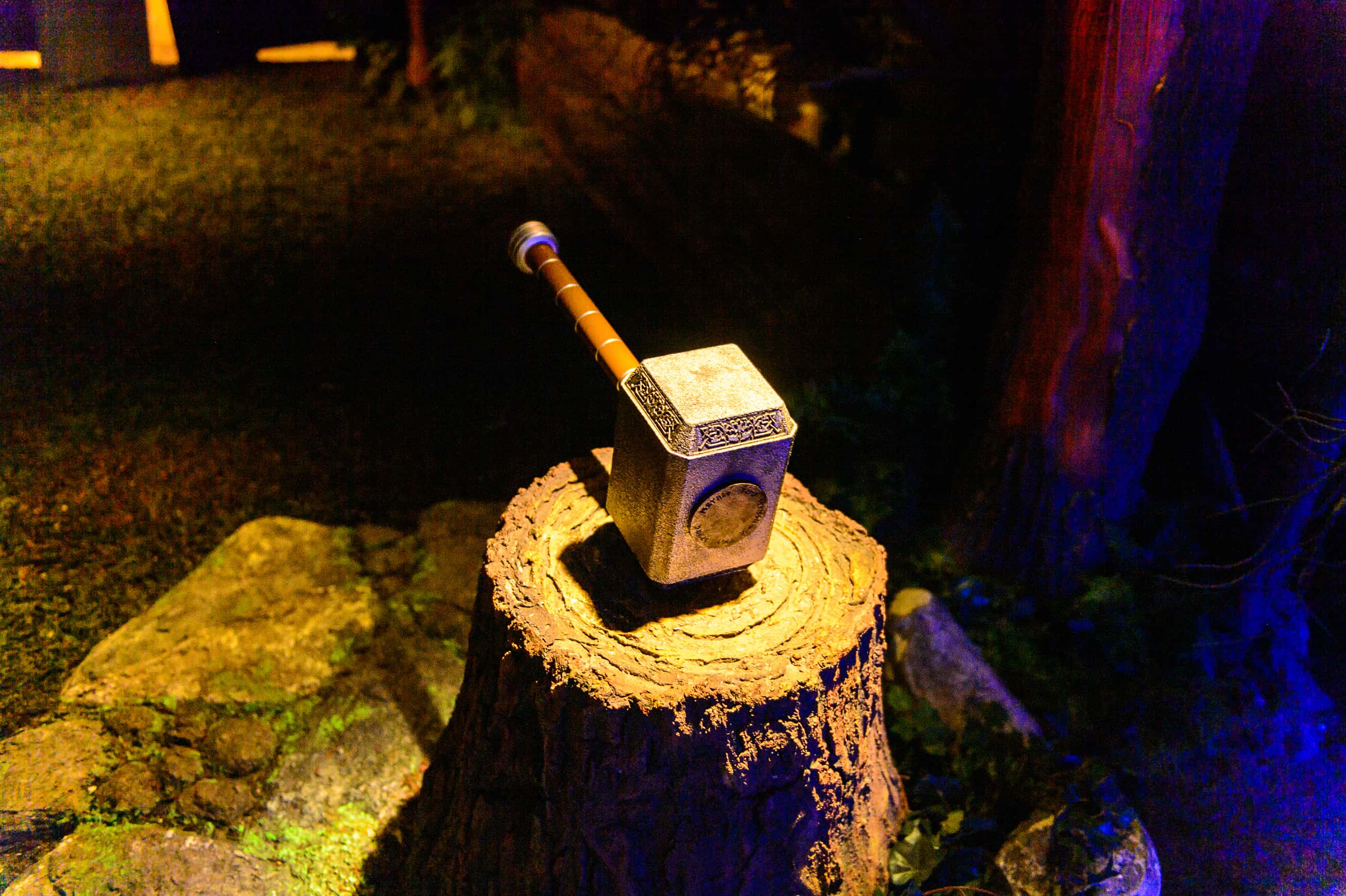“Ymir was a frost giant; he was evil from the first. While he slept, he began to sweat. A man and woman grew out of the ooze under his left armpit, and one of his legs fathered a son on the other leg.”—Kevin Crossley-Holland, The Norse Myths
The gods of the Norse pantheon, led by Odin, were fearsome, warlike deities. But there’s much more to Thor, Týr, and the gang than just might and mead: they also loved poetry, pranks, and cats. The complex cosmology of Norse myth, not to mention the colorful characters and endlessly amusing stories, have informed films, TV shows, and even a beloved comic book series. As we’ve learned more and more about the gods of the Vikings, interest in Norse mythology has exploded, and believe it or not so has belief: today more than 20,000 people around the world celebrate some form of Odinism or Norse-based Neo-Paganism, and that number only continues to grow. Think you're maybe interested? Read on for 42 mythical facts about the Norse gods.
Ymir Source of the World
42. The Creation Of The Earth
The very first being was Ymir, and he was responsible for all life that followed. Ymir was later killed by brothers Odin, Vili, and Vé, who built the world as we know it from Ymir’s body. Ymir’s blood made the ocean, his bones made the mountains, his hair made the plants and trees, his brains made the clouds, his skull made the heavens, and the land where mankind lives, known as Midgard, was fashioned from—you guessed it—his eyebrows.
41. A Tale Of Two Trees
Just like followers of Abrahamic religions, the Vikings believed all humanity began with one man and one woman, made by Odin, Vili and Vé. The man, Ask, was made from an ash tree, while his partner, Embla, was made from an elm tree.
40. Get A Life
Ask and Embla were alive, but at first they were just kind of… there. Odin granted them souls, Hɶnir gave them sense, and Lodur gave them blood. Until these gifts had been bestowed, Ask and Embla lacked ørlǫg, a concept similar to “fate” or “being.”
39. Jack Of All Trades
Odin was king of Asgard, the realm of the gods, and was therefore considered the “all-father” of the Norse pantheon, meaning he had a whole portfolio of responsibilities. In addition to his role as king of the gods, Odin was the god of wisdom, healing, death, royalty, war, sorcery, poetry, frenzy, the alphabet, and the gallows.
38. Master Of Disguise
Throughout Norse lore, Odin often appears in disguise. He has several aliases to match—nearly 200 of them. Most of these names, like Aldaföör (“father of men”), allude to his role as god, while others, like Hàrbaðor (“grey beard”) refer to some aspect of his appearance, and others still (Fengr, or “fetcher”) appear to be just names he offers depending on the situation.
37. Odin’s Land
One of Odin’s names, Sviður (meaning “wisdom”), provides the root for the name of the modern country of Sweden.
36. You Better Watch Out
Odin was also the god of Yule, the Germanic festival celebrated every winter. During Yule, Odin would hunt, flying through the sky on his eight-legged horse, Sleipnir. With his fatherly demeanor, Christmas Eve flights, and long white beard, Odin provided a lot of the material for our modern conception of Santa Claus. Even Sleipnir’s eight legs are said to correspond to Santa’s eight reindeer.
35. One-Eyed King/h2>
Odin famously only had one eye. One might expect Odin had lost the eye in battle, but in fact he traded the eye to Mimir, guard of the Well of Wisdom, in exchange for a drink from the well's magical waters.
34. The Queen Of The Gods
Odin's wife was Frigg, goddess of premonition. Scholars are still unsure of her relationship with the similarly named Freyja, goddess of sex, beauty, fertility, love, and death: their stories are quite similar, and they may be the same deity, or at least closely connected.

History's most fascinating stories and darkest secrets, delivered to your inbox daily.
33. Thor’s Favorite Things
Thor, maybe the most famous Norse god, is of course the god of thunder. If you know him from the Marvel comics or films, you know he wields a magic hammer named Mjölnir, but that's not the only weapon in his arsenal. He also wears a pair of iron gloves, called Járngreipr, and carries a staff called Gríðarvölr. Thor just loved to name stuff, apparently.
32. The Ginger God
Also, while most contemporary readers imagine Thor as a blond, in the Viking stories he was always depicted as a redhead. That might explain his warlike temper.
31. The Other Woman
Thor was married to Sif, a golden-haired goddess associated with marriage and family, so it’s pretty surprising that Thor also had a lover, Járnsaxa. Járnsaxa was a jötunn (an ambiguously defined creature most similar to a troll) and the mother of Thor’s son, Magni.
30. Government Approval
Though the Norse gods are closely associated with the Vikings of the early Middle Ages, worship of Odin and his family never really stopped. Since 2013, the United States has included Thor’s Hammer on their list of approved religious symbol for use on the headstones of military veterans.
29. Italian Fashion
As god of thunder, Thor wielded Mjölnir, the magical hammer crafted by expert dwarven blacksmiths Sindri and Brokkr. Vikings were known to wear amulets of Thor’s hammer around their necks, but this tradition actually seems to have derived from the Romans: the Roman trend of wearing a symbol of Hercules’ Club around the neck spread up through the Germanic tribes to Scandinavia, where it was adapted into something a bit more appropriate for the Vikings.
28. Odin’s Resting Place
According to legend, Odin was buried on Osmusaar, an Estonian island in the Gulf of Finland. The Swedish name for the island, Odensholm, reflects that legend.
26. The Rival Gods
Odin, Frigg, Thor, Loki, Týr, and Baldur are all gods called the Æsir, but there was another family of gods worshiped by the Norsemen: the Vanir. They dwelt in Vanaheimr, and were led by Njöðr, a god associated with seafaring, fishing, and crop-harvesting. Freyja and her twin brother Freyr, Heimdallr, and Ullr are all Vanir.
25. The Other Half Of Heaven
Freyja—who may or may not be the same goddess as Frigg—was one of the chief goddesses of the Norse pantheon. Freyja ruled over Folkvangr; alongside Valhalla, Folkvangr was one of two places slain Viking warriors went after their deaths.
24. The Missing Husband
Freyja was married to the god Óör, a god of no particular significance, but who is often conflated with Odin. Óör is almost never seen with Freyja in Norse art. Rather, Freyja is often depicted sitting in her hall, Sessrứmnir, crying tears of red gold for her missing husband, or riding out to look for him in a chariot drawn by a team of cats.
23. Holy Catrimony
Because Freyja was associated with both marriage and cats, it was tradition among the Vikings to give cats to new brides on their wedding day. Not only did they have symbolic significance, they were considered useful creatures to have about and essential to running a good household.
22. Trading Spaces
The Æsir once tried to invade Vanaheimr, but the Vanir proved an equal match for them. The two warring factions called a truce, and traded gods: Njöðr and Freyr joined the Æsir, while Hɶnir and Mimir joined the Vanir. This essentially merged the two Norse pantheons, creating a single religion.
21. Sweet Talk
To celebrate their truce, the Æsir and Vanir all spit into a bucket. From their spit they made a man named Kvasir. He was said to be the wisest man in Vanaheimr, and when he was killed by the dwarves Fjalar and Galar, his blood was drained and mixed with honey to make the Mead of Poetry, a magic elixir which grants wisdom and poetic skill to anyone who drinks it.
20. Soul Seaching
The Æsir and Vanir might not have been the only deities worshipped by the Vikings. In 1954, archaeologists digging up the old Swedish city of Helgö discovered a statue of the Buddha made in India, a scoop used for christenings by Coptic Christians in Egypt, and a Roman Catholic crozier taken from Ireland. The Vikings were expert traders and pillagers, of course, the but the gathering of these religious artifacts could suggest the Vikings were doing some spiritual soul searching around the sixth century.
19. What’s Cookin’?
Every day, Andhrímnir, the best cook in Asgard, kills, butchers, and cooks Sæhrímnir, a magic boar. The Norse gods feast on Sæhrímnir, and then bring the boar back to life so they can enjoy the same meal the following night.
18. That’s So Lame
Thor has also been known to consume, resurrect, and re-consume Tanngrisnir and Tanngnjóstr, the two goats who tow his chariot. Once, Thor shared his meal with a peasant family. One of the children sucked the marrow out of a leg bone, and when Thor resurrected the goats the following morning, one of them was left lame.
17. Taking A Bite Out Of Crime
Týr began as the god of war, and was associated by Roman scholars with their god Mars. However, Týr’s role gradually evolved until he was the god of justice. He is often depicted with the wolf, Fenrir, biting his hand. According to legend, Fenrir refused to be bound unless a god was willing to place their hand in his mouth; in the name of law and order, Týr volunteered.
16. Under The Mistletoe
Baldur was Frigg’s favorite son, so when he began having premonitions of his death, she demanded that all things animate and inanimate in Asgard promise to never hurt him—leaving him impervious to harm. However, the jealous, scheming Loki discovered the one thing that didn't make that promise: mistletoe. Loki fashioned an arrow out of mistletoe, and convinced their brother, the blind Hodr, to fire the arrow at Baldur, killing him.
15. All Loki’s Fault
For scheming to kill Baldur, Loki was imprisoned in a cave with a giant snake. The snake dripped its venom on Loki, which caused him to convulse so badly the whole earth shook. This was the Norse explanation for earthquakes.
14. Proud Papa
Loki was father to an odd brood of children. With his partner, the giantess Angrboda, he had three: a wolf-like creature named Fenrir, a serpent named Jormungand, and Hel, goddess of the underworld. He must be so proud?
13. Take Me To Church
In 2015, construction began on the first Norse temple in almost 1,000 years. The temple, which was built in Reykjavik, Iceland, was built by members of Ásatrứarfélagið, a pagan advocacy group. Current membership in Ásatrứarfélagið has tripled to 2,400 members in the last decade, making the temple very necessary for meetings and rituals.
12. Norse Race
Since the 1970s, an emerging Neo-Paganist movement, which celebrates traditional Norse religious beliefs and practices, has been tied to a number of white supremacist groups. These groups, which see “Odinism” as the rightful traditional religion of the Aryan race, are at odds with anti-racist Neo-Pagan groups like Troth, who wish to share their beliefs with everybody and tie no racial significance to them.
11. The Name Game
In 2017, an Icelandic couple decided to name their daughter Hel. The Icelandic Naming Committee (yes, that’s a thing) denied the couple permission to give their daughter that name because it “could cause social difficulties for the child.” The Naming Committee has also forbidden parents from naming their daughters Skessa (“troll”) and Þrjótur (“villain”) for the same reason.
10. The Holy Texts
Much of our information about the Norse gods comes from two 13th century sources, The Poetic Edda and The Prose Edda. The latter even has a definitive author, Snorri Sturluson. Both texts were written in Iceland after the island nation had been Christianized: as a result, they have been euhemerized, that is, worked to fit the dominant Christian conception of history.
9. Trojan Norse
According to Sturluson, the Norse gods were humans who fled the fall of Troy, making them very similar to the characters of Virgil’s Aeneid. Because of their superior culture, they were accepted as god-kings by the more primitive northern tribes. Thor, for example, was the grandson of the King of Troy, and raised in Thrace. His supposed father, Memnon, was king of modern day Ethiopia, meaning that the great Viking god of thunder was actually of African descent.
8. Holy Days
Most of the days of the week derive their English names from Norse gods: Tuesday is named for Tyr, Wednesday for Odin (or Woden), Thursday for Thor, and Friday for Frigg. The Norse name for Saturday had no religious significance: they called it Laugardagr, “washing day.”
7. The Gods’ Day Off
The Germanic and Norse peoples adopted the Roman system of weekdays around the third century, replacing the Roman gods named on those days with their own. Because the Norse didn’t have a god who was really analogous to the Roman god Saturn, they simply kept Saturday.
6. Gods In The Family
Know who’s a distant relative of Thor? The Queen of England, apparently. Early Germanic chroniclers traced the ancestry of Cerdic of the Gewisse back to Odin, the father of the Norse gods. In turn, Elizabeth II is a descendent of Cerdic through the House of Wessex.
5. Distant Relatives
QEII is also related to Maria de Padilla, Queen of Castille and mother-in-law of Edward III, whose lineage is traditionally traced back to Muhammad. This means the gods of the Norse pantheon have familial ties to the Muslim prophet.
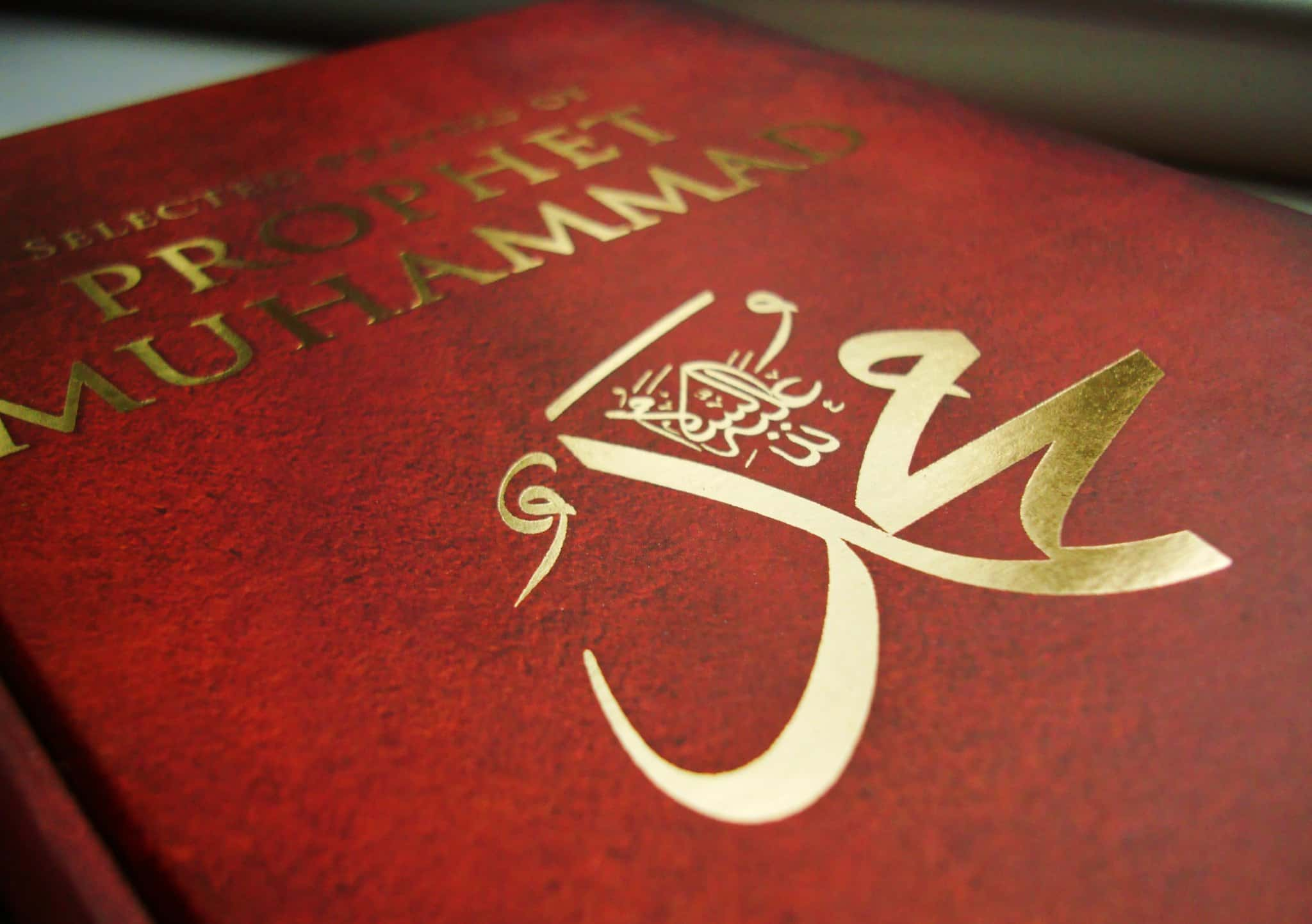 Flickr, Rustam Aliyev
Flickr, Rustam Aliyev
4. Those In Glass Houses…
Sif may have gotten her revenge on her philandering husband, though. During a flyting (a kind of rap battle among the gods), the trickster Loki claimed to have slept with the goddess. Instead of denying the accusation, Sif merely changed the subject. That's a mic drop moment if I've ever heard of one.
3. Hook Up Horror Stories
Loki personally gave birth to Odin's eight-legged horse, Sleipnir, the product of a bizarre run in with the mythic stallion Svaðilfair. Loki had disguised himself as a mare, and, well, one thing led to another...
2. Go To Hel
Loki’s daughter, Hel, was goddess of the underworld. Above the waist, she was a beautiful, though sad-looking, woman, but below the waist she was a rotting corpse.
1. Wedding Crashers
Thrym, the king of the giants, once stole Thor’s hammer and refused to return it unless he was given Freya’s hand in marriage. Freya refused, so Thor disguised himself as Freya, married Thrym, stole back his hammer and killed not only Thrym but all his wedding guests as well. How's that for a red wedding?
Sources: 1, 2, 3, 4, 5, 6, 7, 8, 9, 10, 11 , 12, 13, 14, 15, 16, 17, 18, 19, 20, 21, 22, 23, 24, 25, 26, 27, 28, 29, 30, 31, 32, 33, 34, 35, 36


